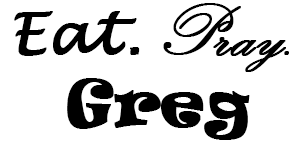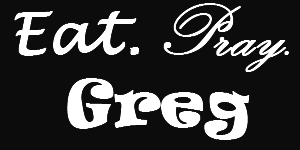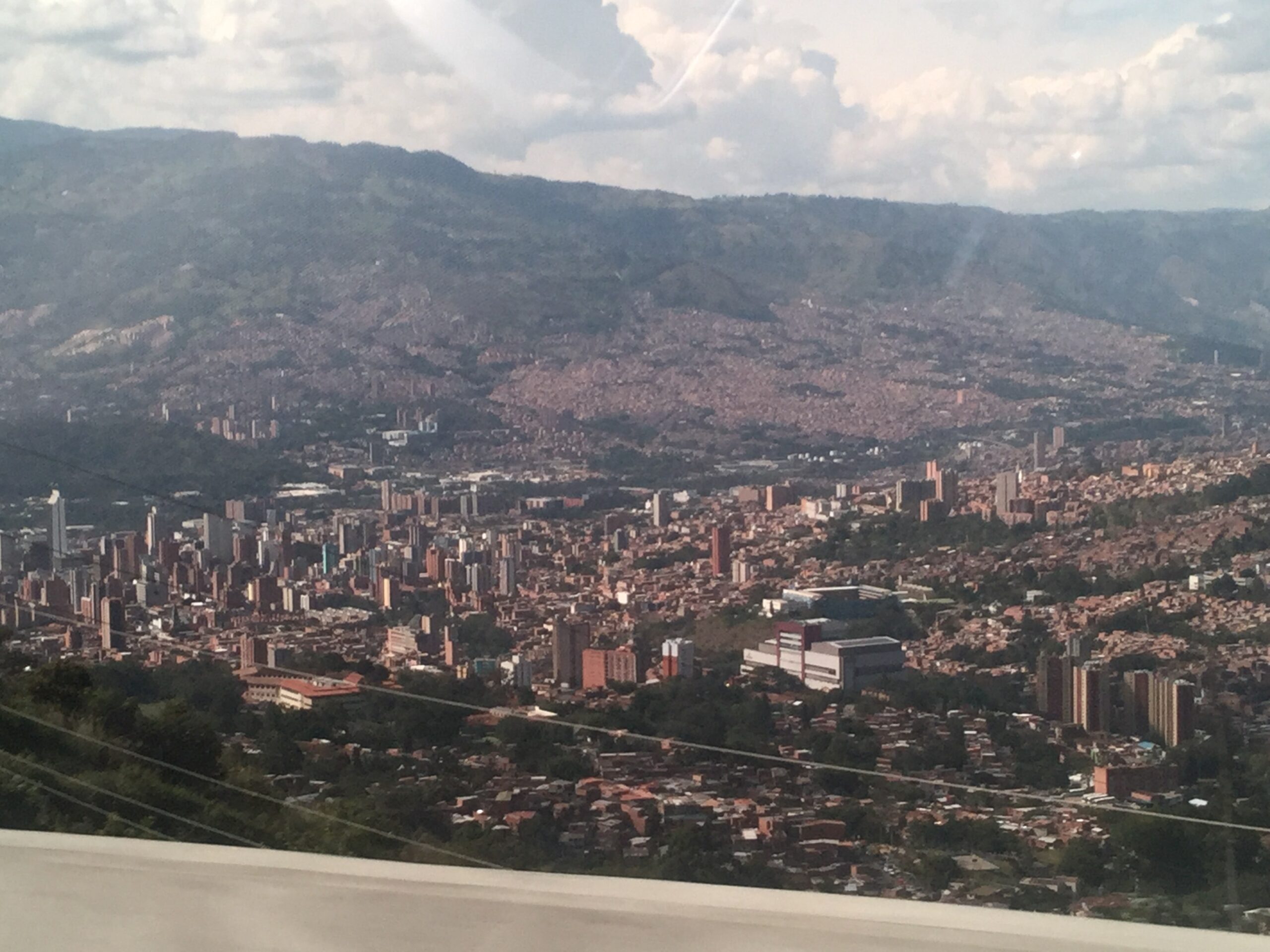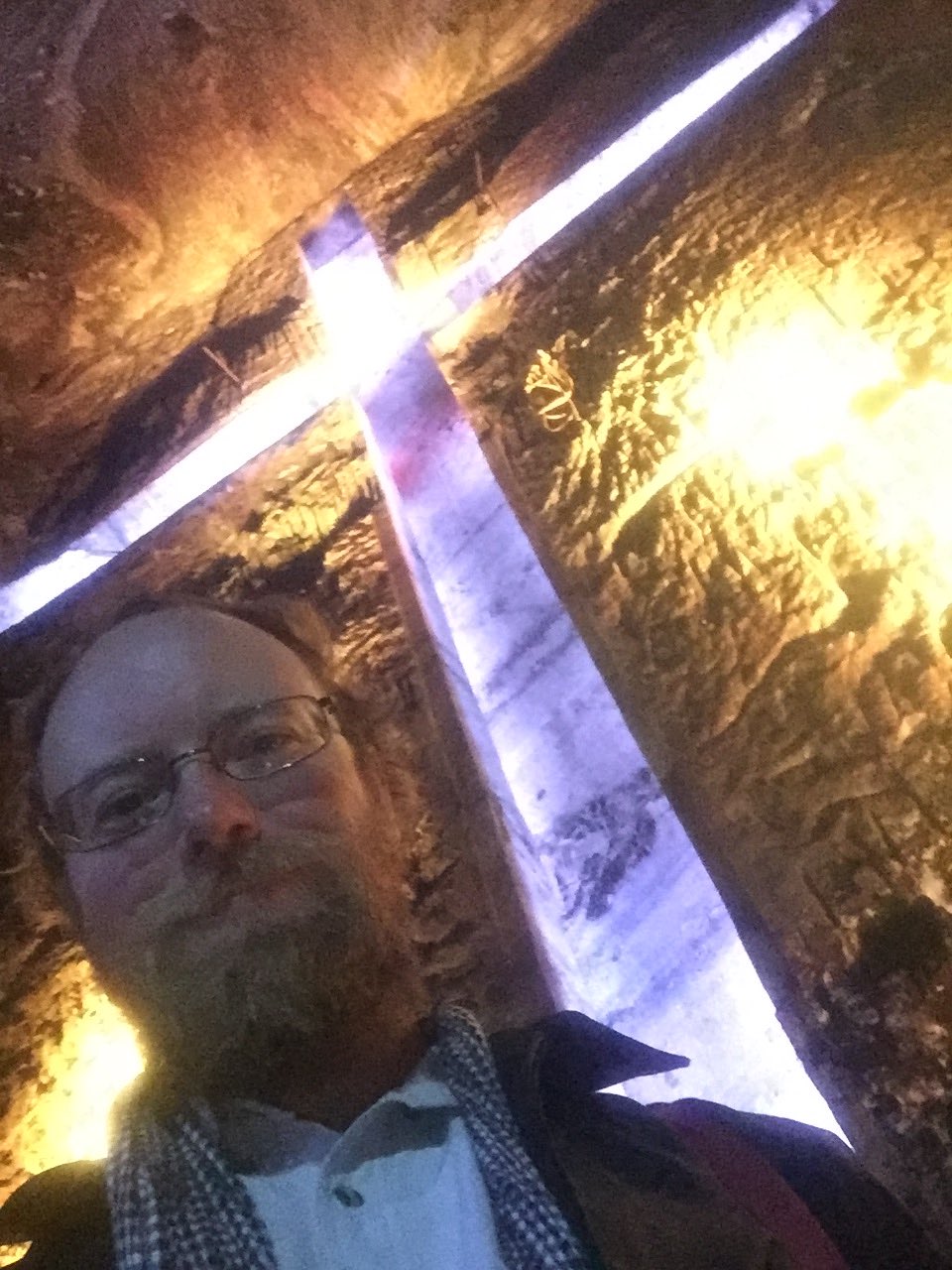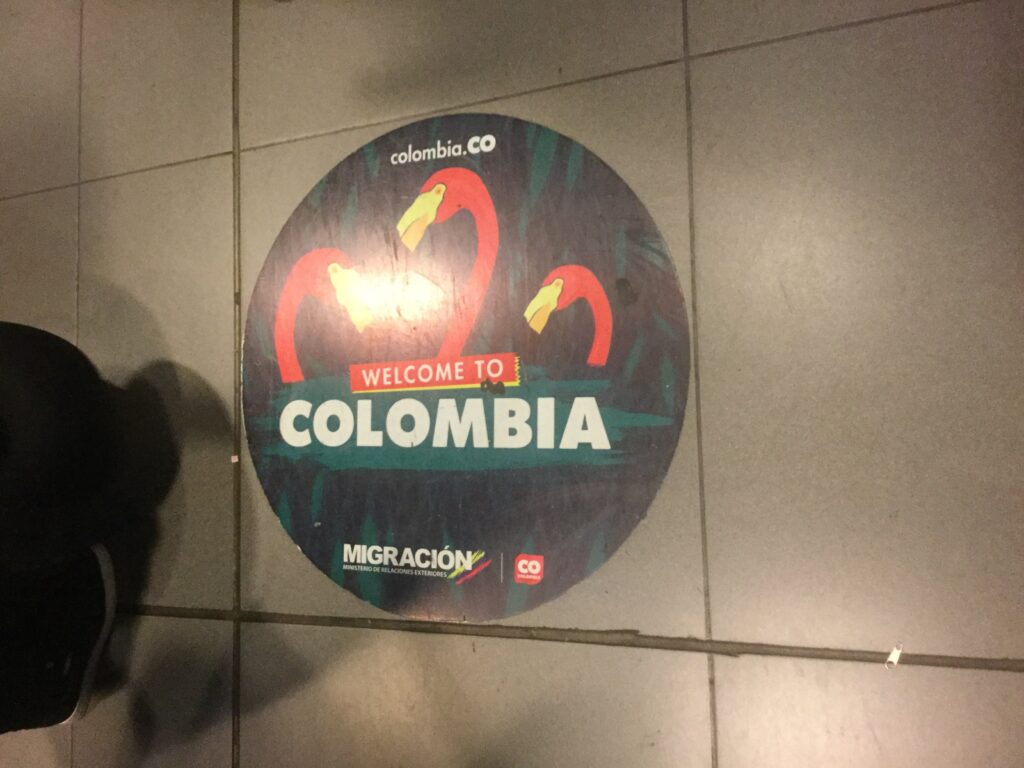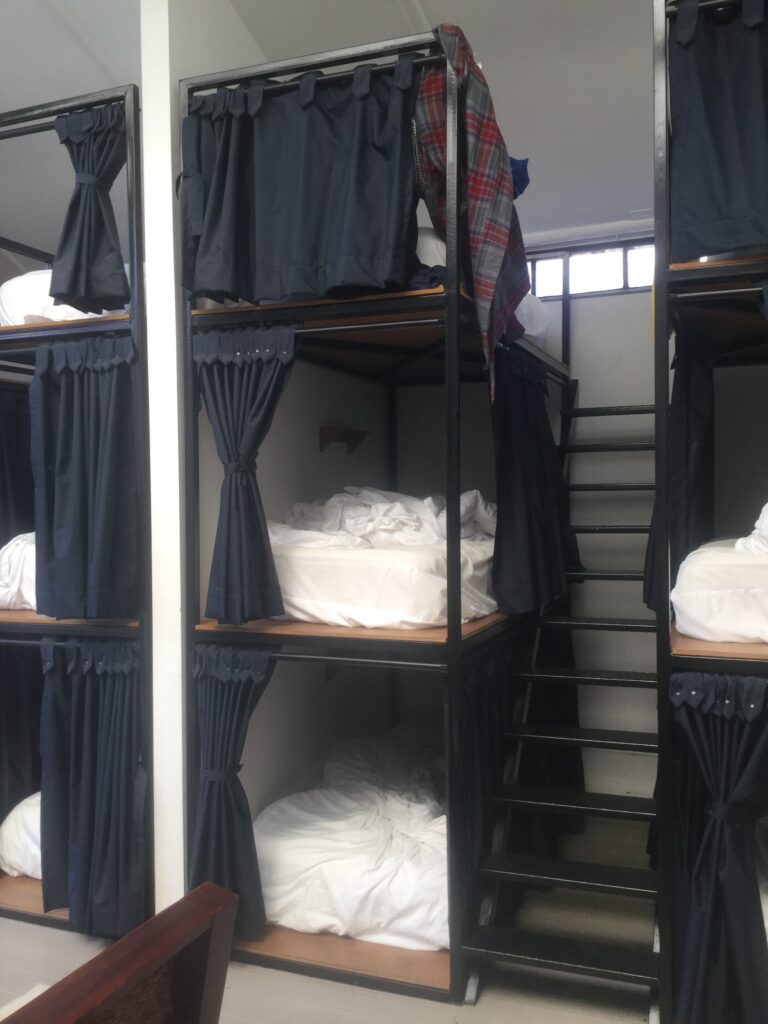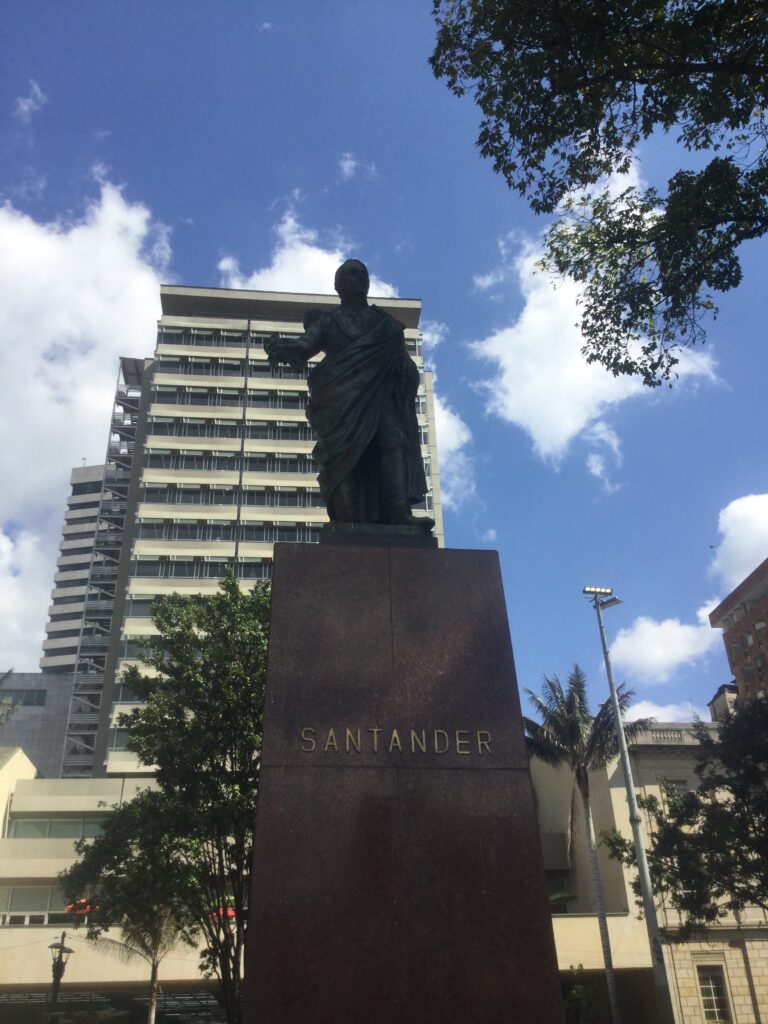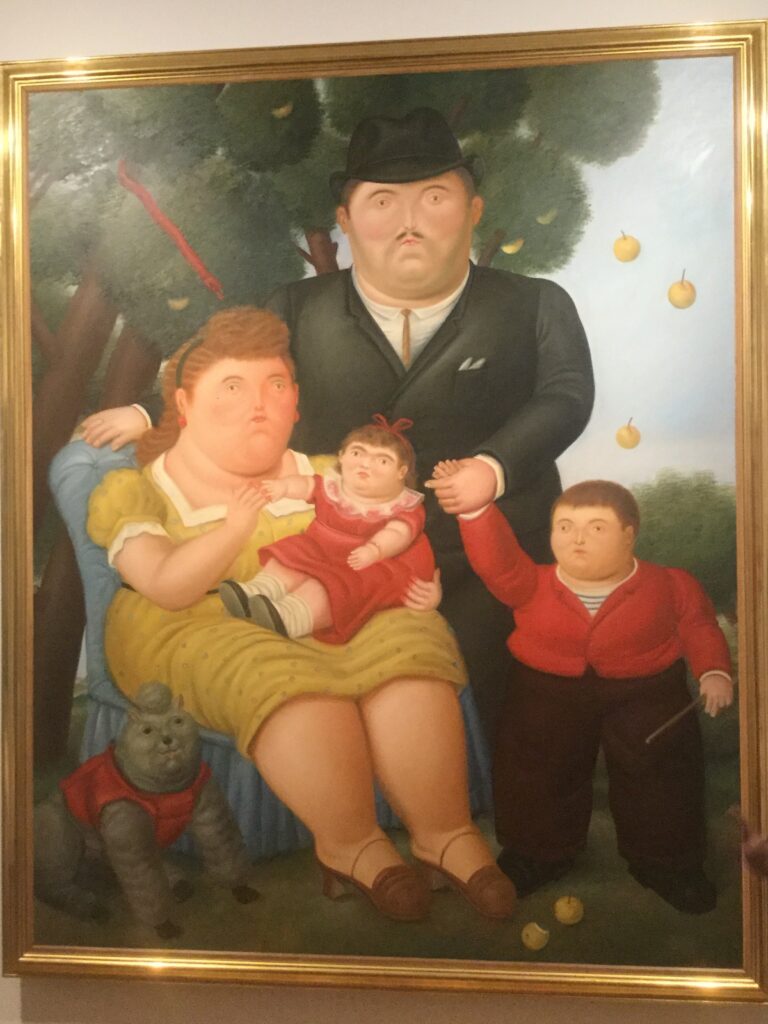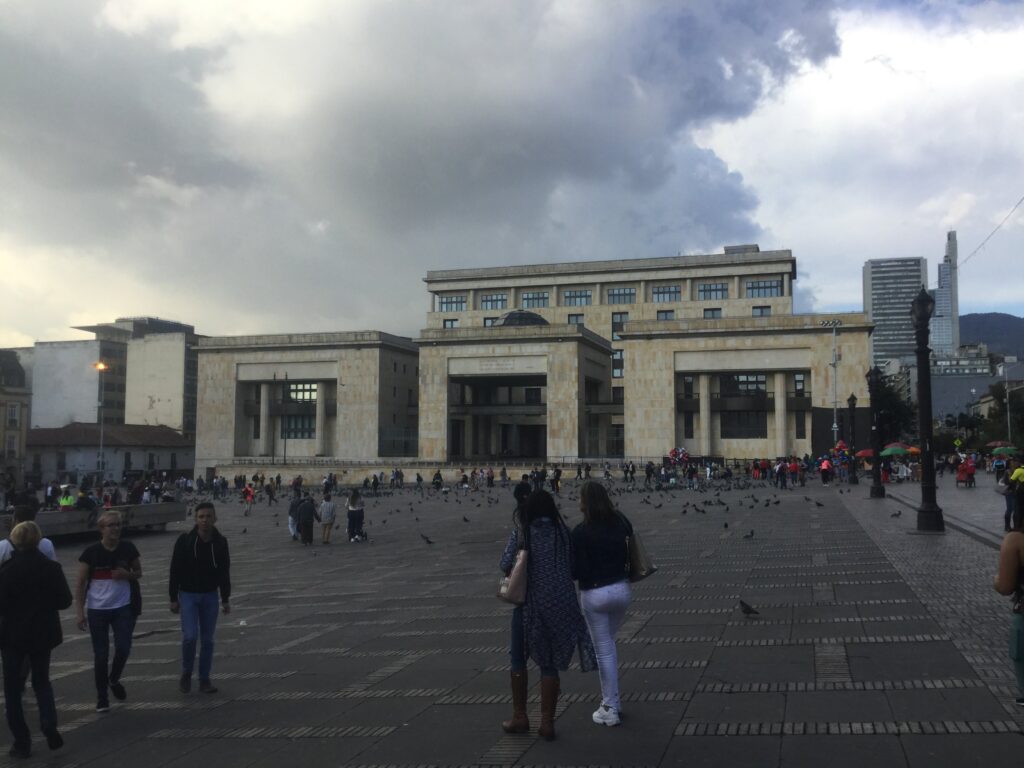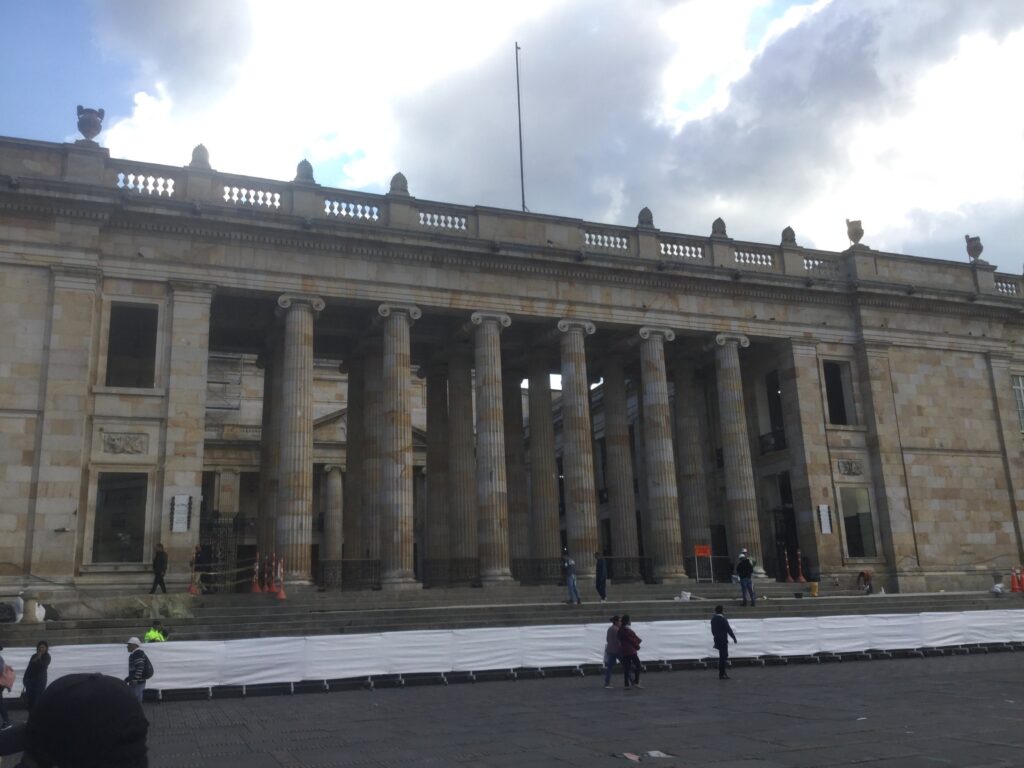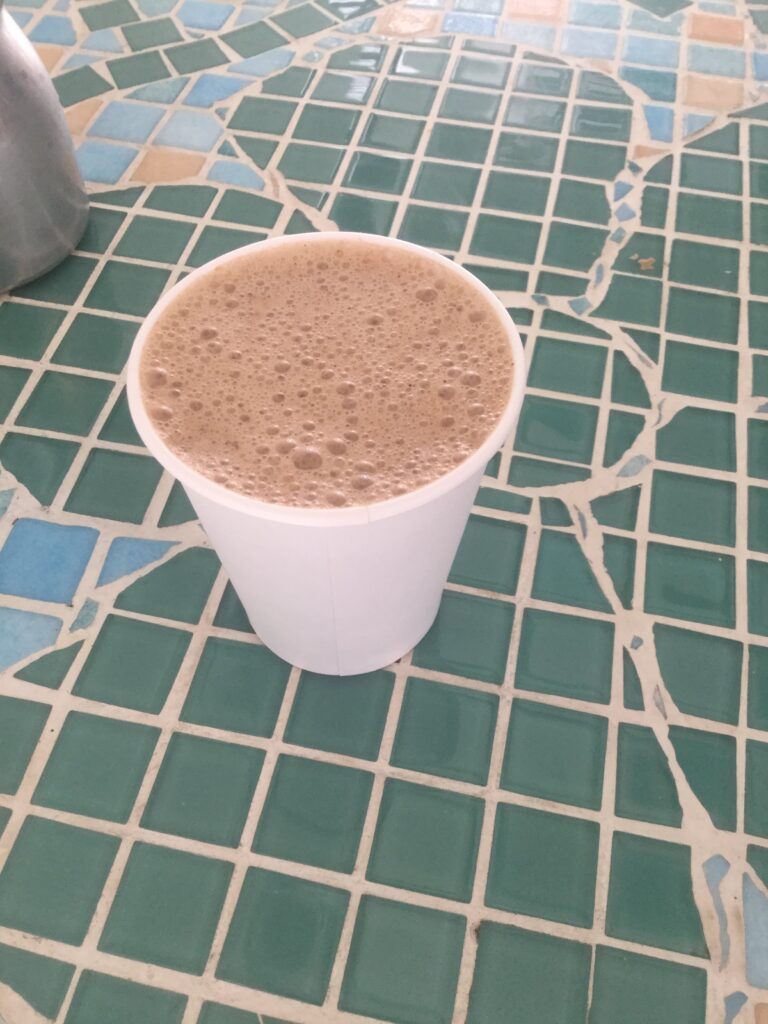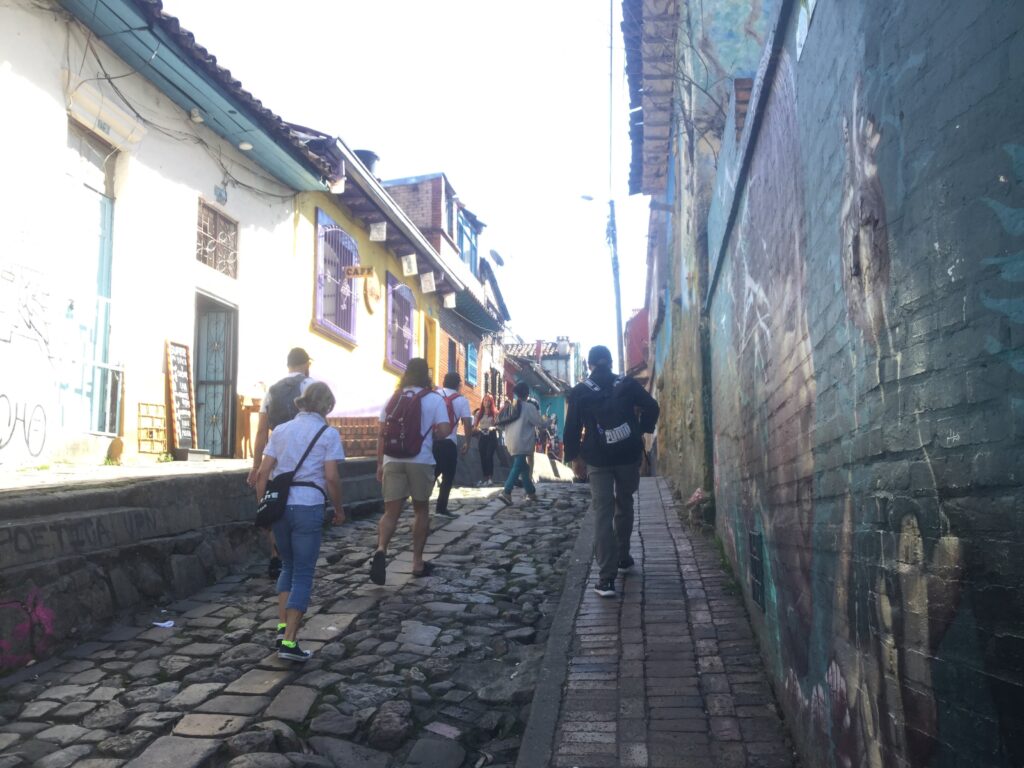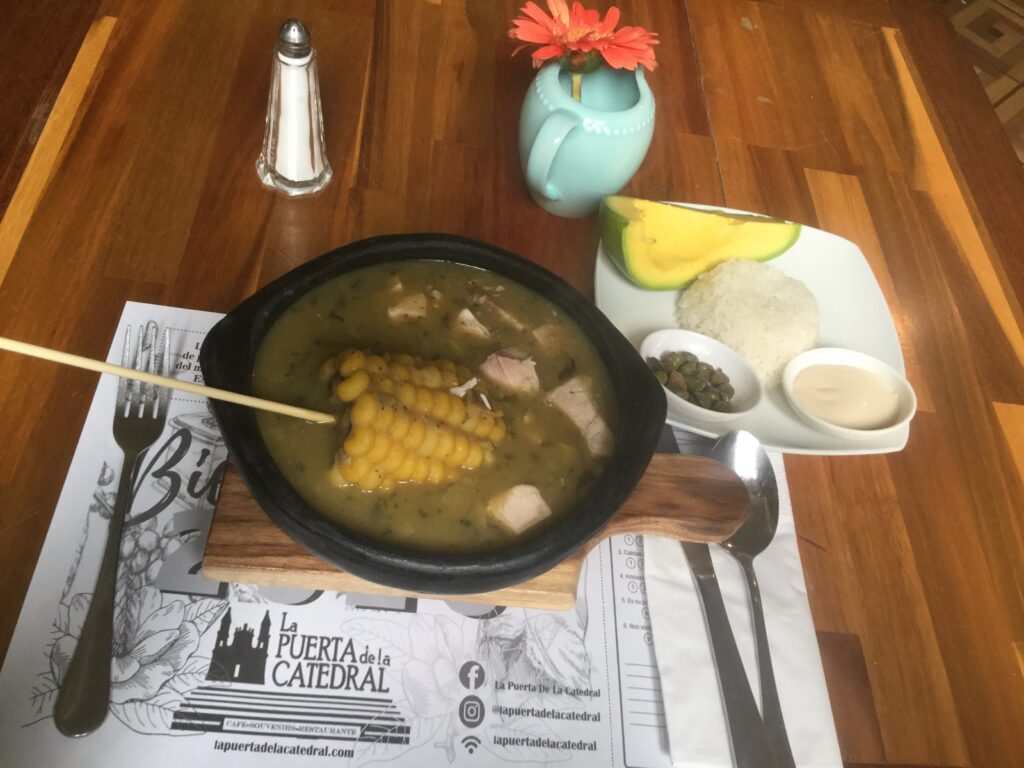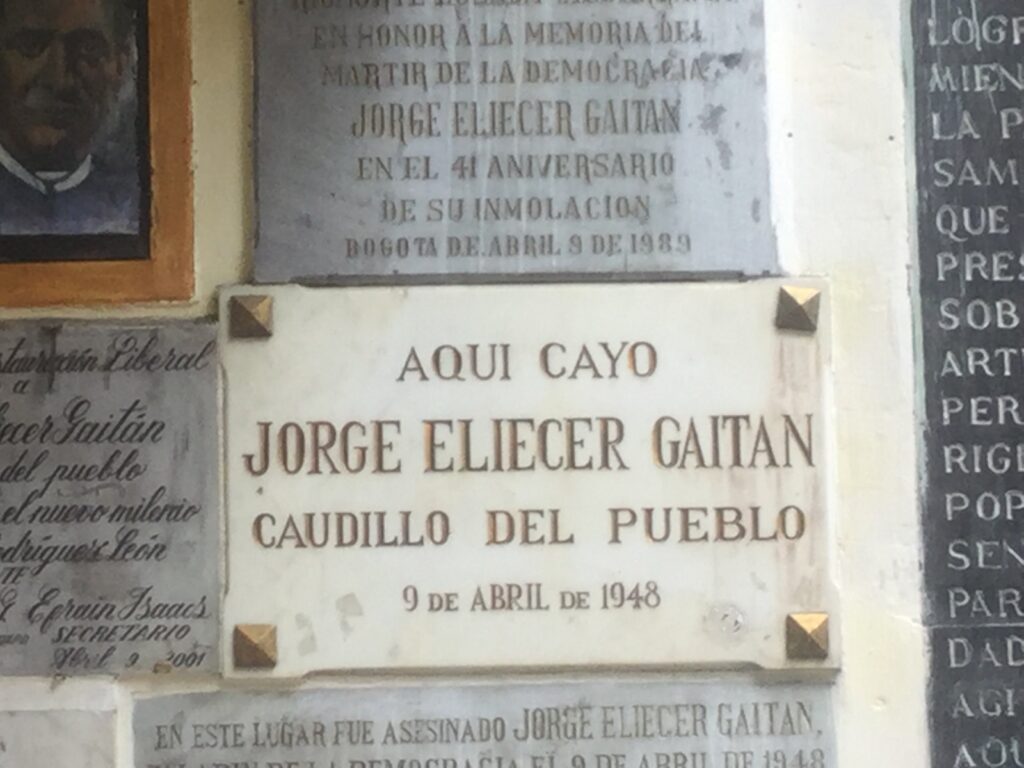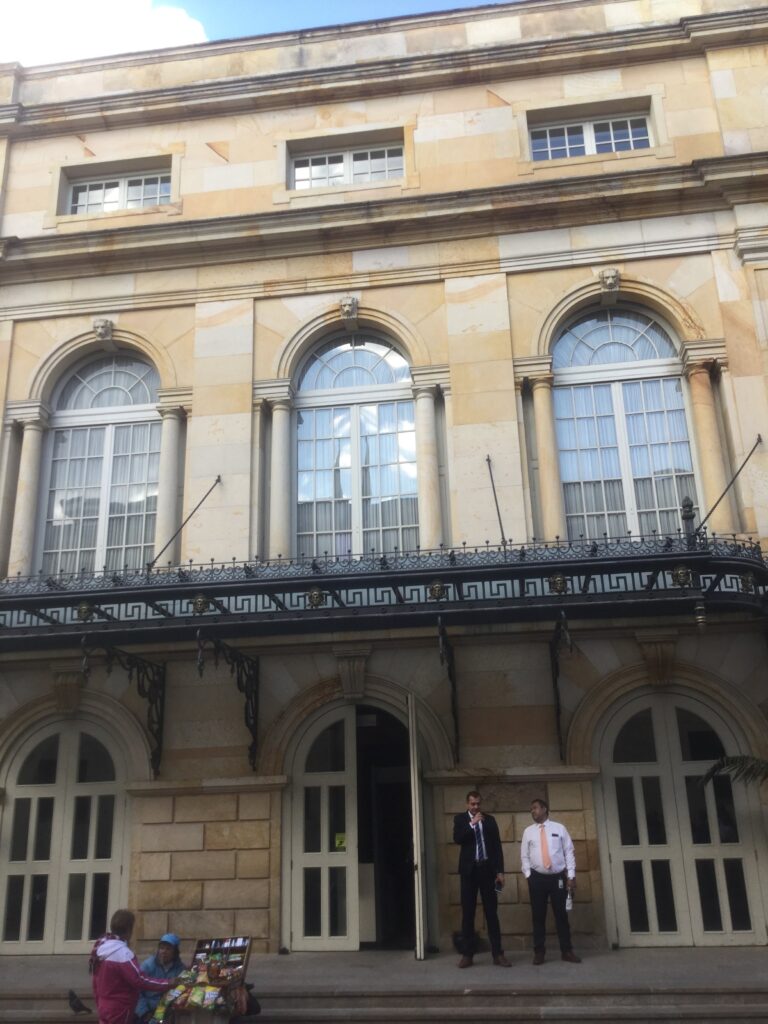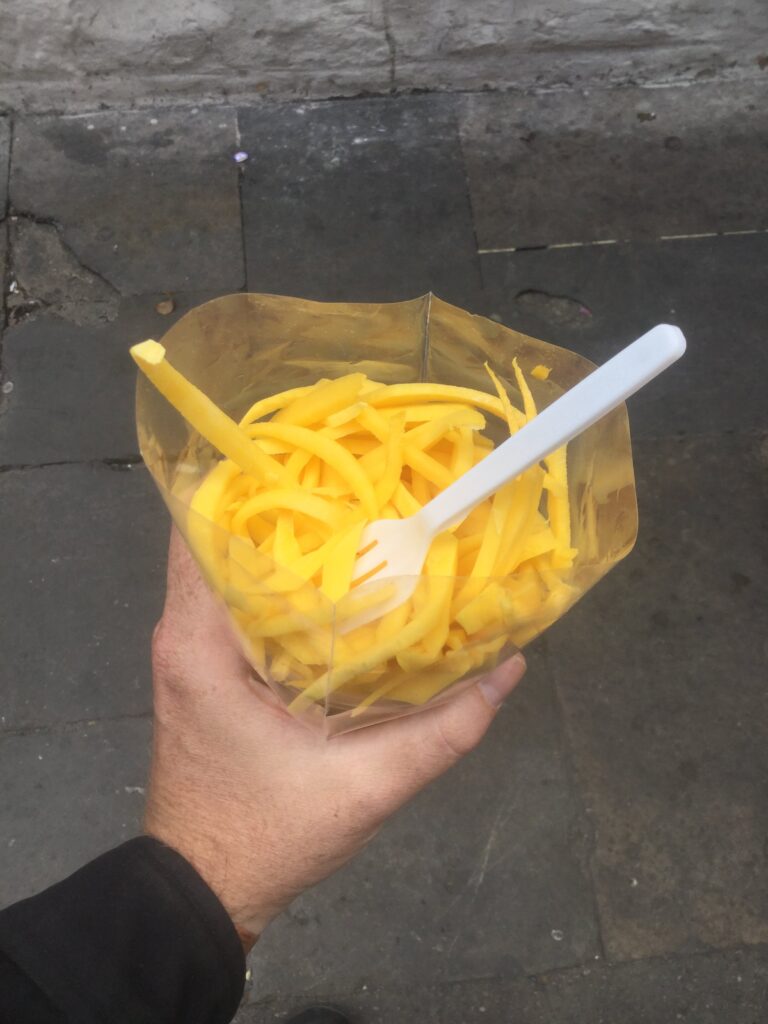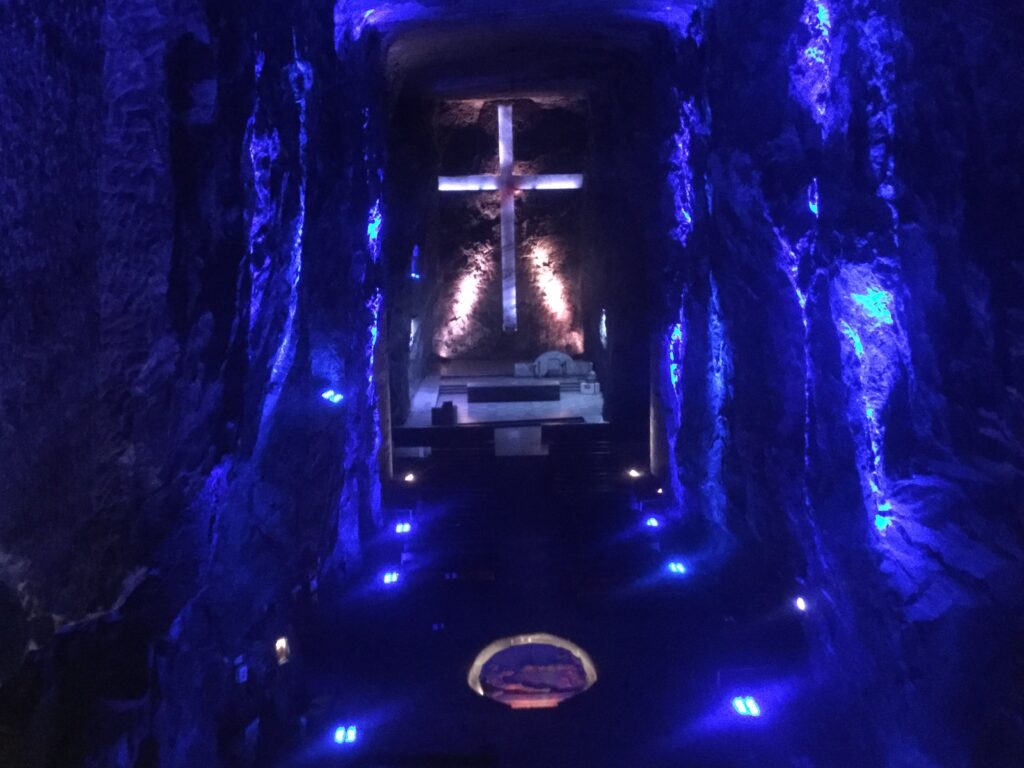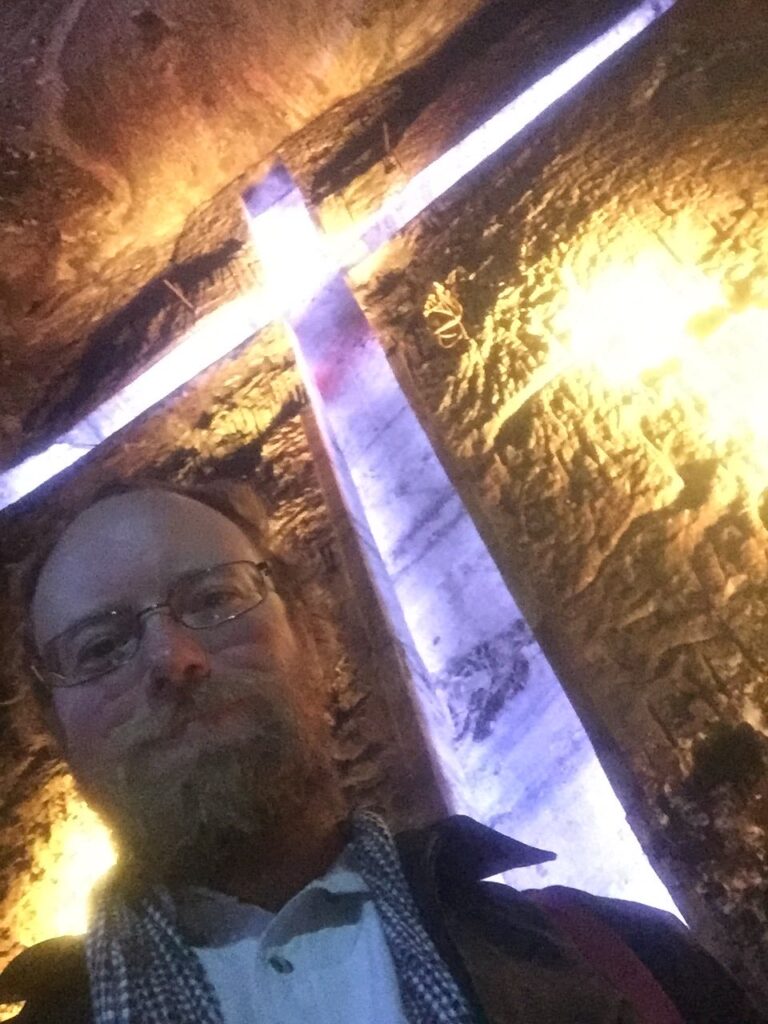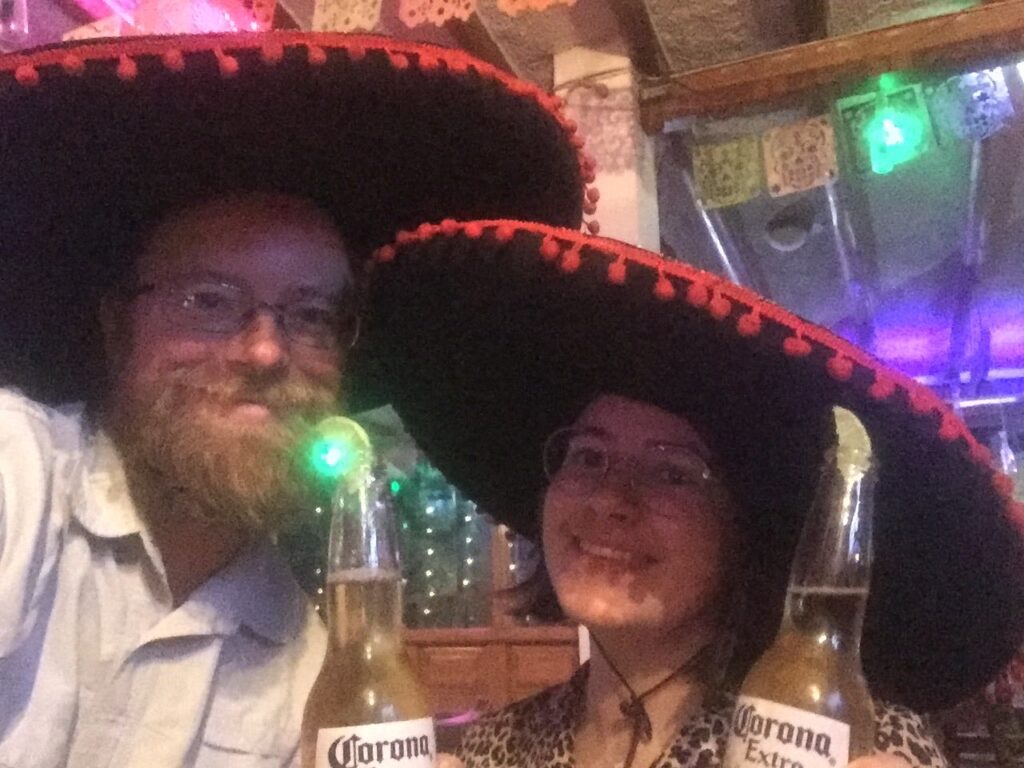I got up, packed up, and headed to the airport with Chloe in tow. I didn’t realize it but she was heading to Medellin as well. Since Uber was made illegal the night before, I got a nice note from them when I opened the app asking for support to take on the taxistas to come back. I needed to download a new app called Didi, which was the Chinese equivalent of Uber. I hated having to download it and give it my credit card info, but there were no other options as we were pretty far out of the city.
The first driver showed up and told us he had two conditions: 1. We had to pay in cash upfront and 2. He was going to drop us away from the airport. I told him that I was paying with a credit card and that was final. He told me to cancel and I did. After relating the whole thing to Chloe, I got a new driver and he picked us up and took us to the airport with no problem.
Now, I am not cheap, but I am frugal. However, when I have the opportunity to help someone, especially someone that is gracious, I help. Chloe was a student, far from home, traveling alone in a place that was not the safest and did not speak the language. Some may call it paternalistic, but I had the money and felt no qualms about it which is why I handled our transport expenses without asking for anything in return. I had been on the receiving end of the kindness of strangers and friends and realized it was my time to be magnanimous.
We got to the airport and hung out together for a bit. We made it through security and they ended up taking a lighter that I forgot about and that I had had since Belfast. I said my goodbyes to Chloe and we said we would meet up in Medellin. I got on my plane, flew through some chop, then landed.
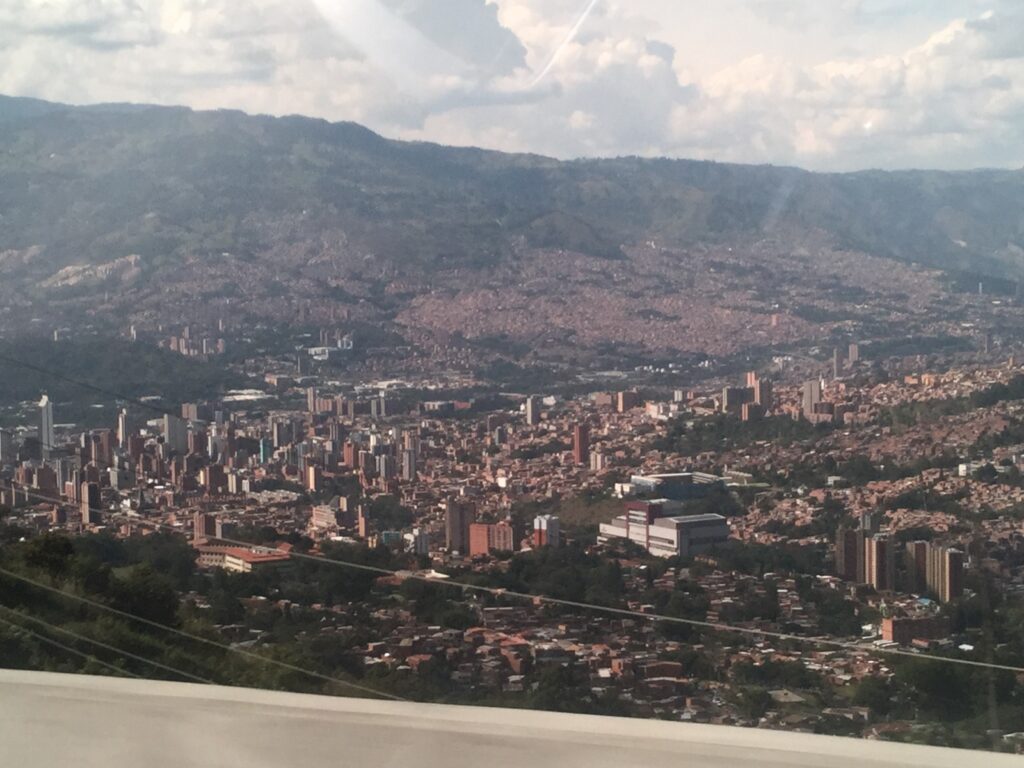
I got another DiDi and headed to my hostel. We had to travel through a tunnel to get there, but once we got out, I do not think I had ever seen such a panorama. We were high above the city, speeding along with the city of Medellin down below. My driver was Stiven (not a typo) and he was very nice and informative. I was dropped off on what at what looked like hostel row in the very posh Poblado neighborhood.
Now, I checked the reviews of the place before I booked, and a few people said that there were incidents of baiting and switching going on. I paid for a room with two beds, but when I arrived, they put me in a four-topper. I showed the guy my reservation, then he called the owner. The owner told me to check my reservation. She had gone into the booking system and changed my reservation. I said that this shit did not fly. I called booking.com and told them what was happening. I sent them a pic from the guy’s phone as well as a screenshot from my reservation email. They were embarrassed and sent me a $10 credit. I ended up getting a private room with a bathroom, which had no toilet seat, no showerhead, and no hot water. The floor had not been swept or mopped and there were roaches running about. The place had an 8.6 rating. Welcome to Medellin.
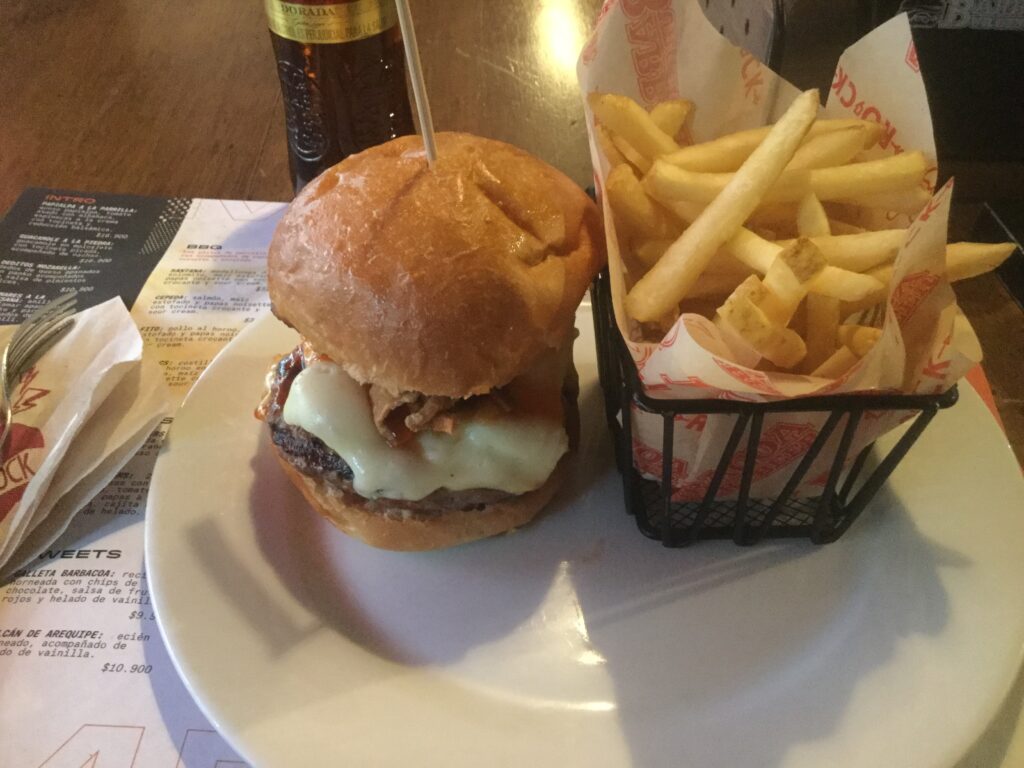
Anyway, after I finally got situated, I got my room key, did some work, then got dinner across the street at some burger joint. I bought some water, talked to A, took a really cold shower, and went to bed, trying not to be devoured by roaches. It was going to be an interesting week.
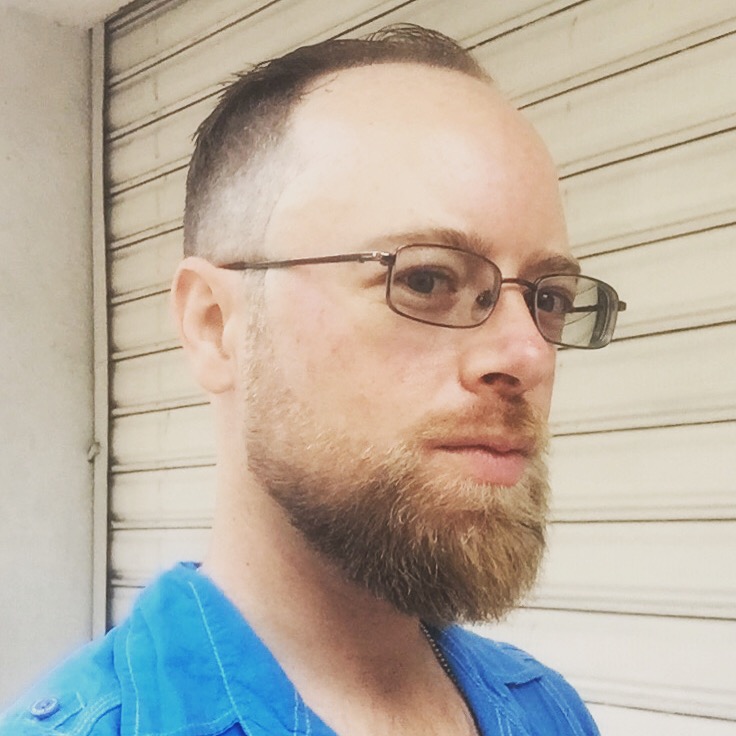
I woke up the next day, had the hostel-provided breakfast on the rooftop overlooking the city and decided what I was going to do for the day. I was getting a little shaggy, so I decided to go find a place to get my hair and beard cut. It turned out to be the best one of my life. It was a blend, a shave, and my first beard styling. I got a coffee at a local shop, felt and looked FAF, and spend that time figuring out what to do.
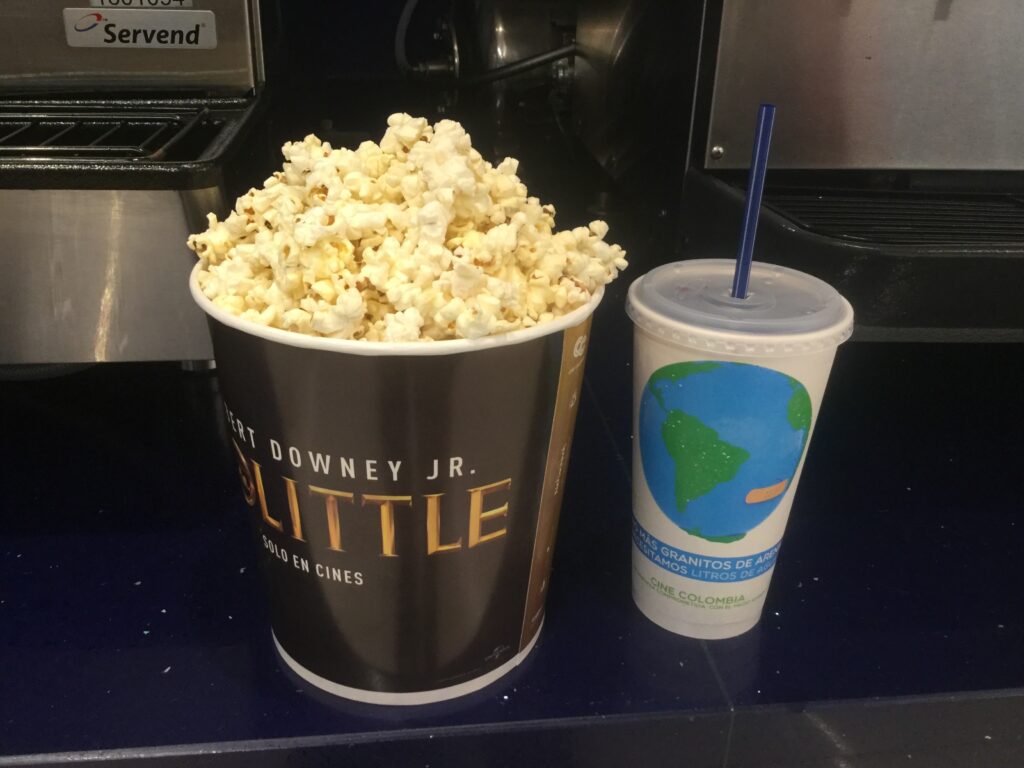
I heard from Chloe and offered for me to join her on a hike. I didn’t feel like it so I decided to do one of my favorite past times and go see a movie. I hiked through the posh and safe Poblado neighborhood to a mall with a theatre. I got my ticket and ordered a big-ass “medium” popcorn and a drink then headed in. Even though the attendant took my ticket and ushered me into the theatre, it was the wrong movie. When 1917 started, I realized the mistake, got up, and walked into the right one. I was not ready for the religious and philosophical roller coaster that was to be Bad Boys For Life.
After the movie, I headed back to the hostel and tried calling my father for his birthday. After the death of my other uncle on my trip, my father and his other brother cleared away the detritus of their 30-year estrangement and were spending time together. He did not pick up the phone then, but I would talk to him later.
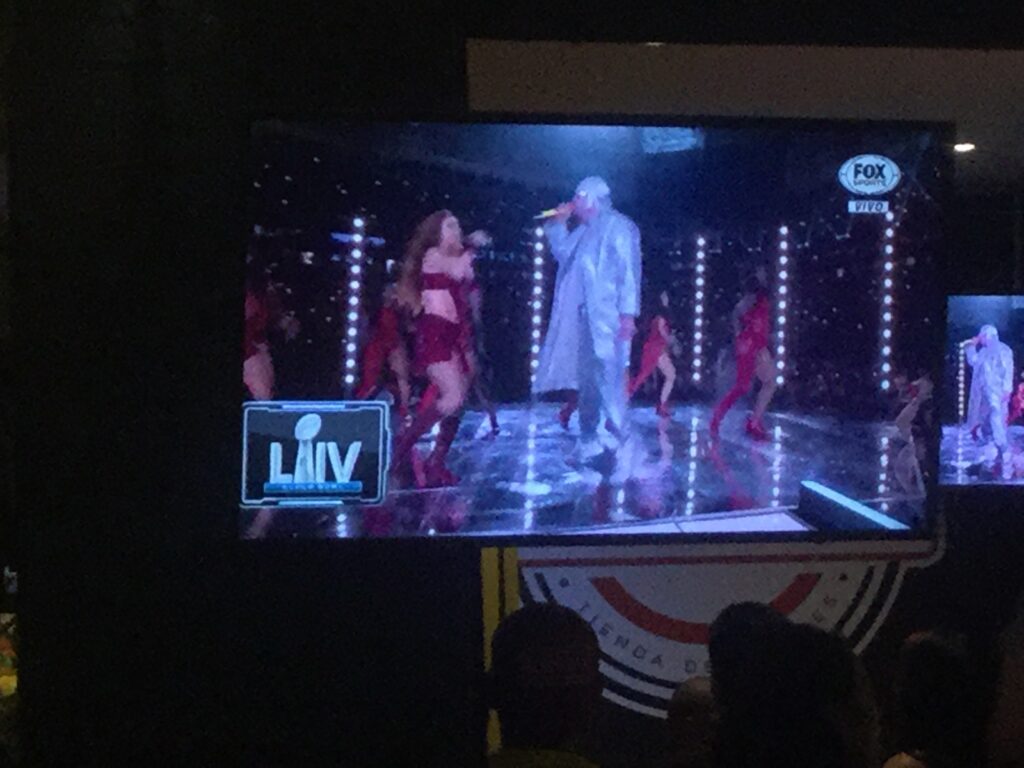
After doing some client work, I messaged Chloe, and we went out and had a beer, then some dinner, then some drinks as we watched a little of the halftime show for the Super Bowl. It was Shakira and Jennifer Lopez, so needless to say, the country was going a little crazy. Over dinner chicken wings, I explained American Football to Chloe to the best of my ability.
I walked Chloe home and we made plans to do a walking tour the next day. I then headed back to the hostel. I took a shower, did some laundry, and went to bed in the heat.
The next day, I got up, had brekkie, then headed downtown to do a walking tour. I booked online and the tour operator said it would be a quick and easy jaunt on the metro. It would turn out to be anything but.
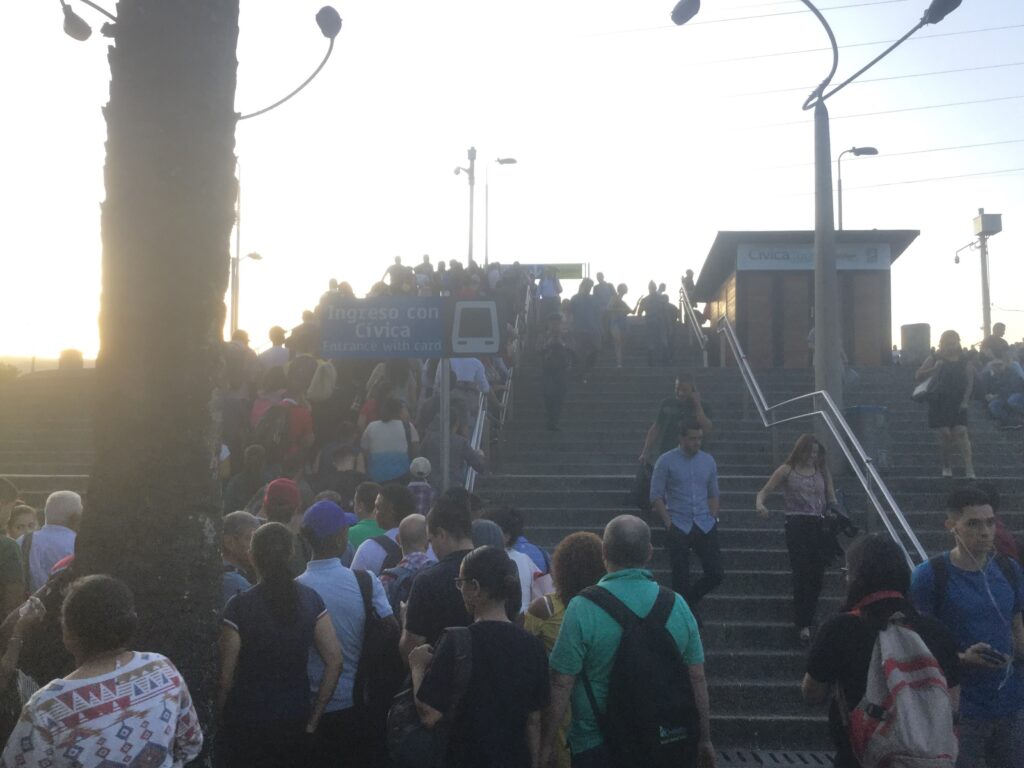
I headed over to the metro station and there was a line around the block of people needing metro cards. They did not have any machines that could service multiple people at once and only one person was working the counter. It was a disaster.
I was unable to procure a card and also could not get a cab downtown. So, I did what anyone would do. I gave up. I texted Chloe who I was supposed to meet for the tour, but since she used the metro the day before and already had a card, she easily was downtown without me.
I grabbed a coffee at a coffee shop, a little something to eat as well, then did some work after walking around a little. I called and talked to A. Then made arrangements with Chloe to go to the Pablo Escobar Museum when she got back in the afternoon.
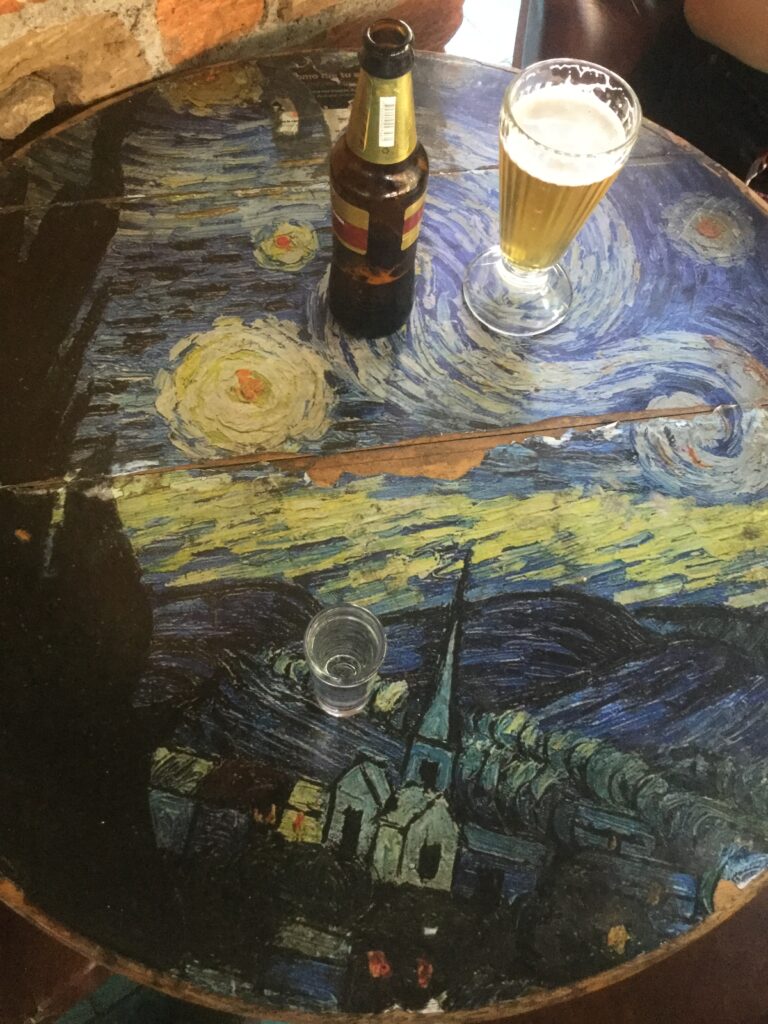
After the tour, she called to let me know she was coming back. We met at the place that Google said was the museum, but it was just a building he had owned. So, we did the next best thing which was completely giving up and go get some drinks.
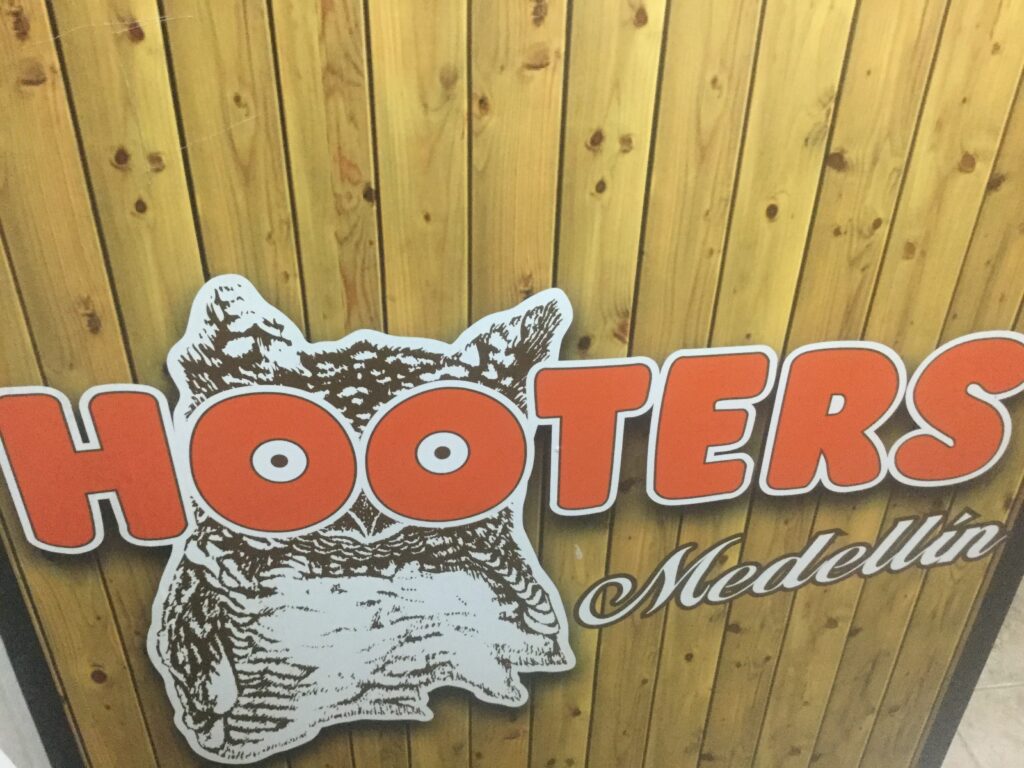
One of the things that fascinate me about the British is that they conquered India, North America, parts of Asia, and the Pacific, but seem to have used none of the spices of those lands in any of the cooking. So, I was very surprised when Chloe asked if we could go get some spicy chicken wings at the Medellin Hooters. As we were walking, she got shat on by a bird which, after the initial shock and laughter, I said was good luck. We got to the Hooters and ordered some wings, some beer, and a lot of napkins.
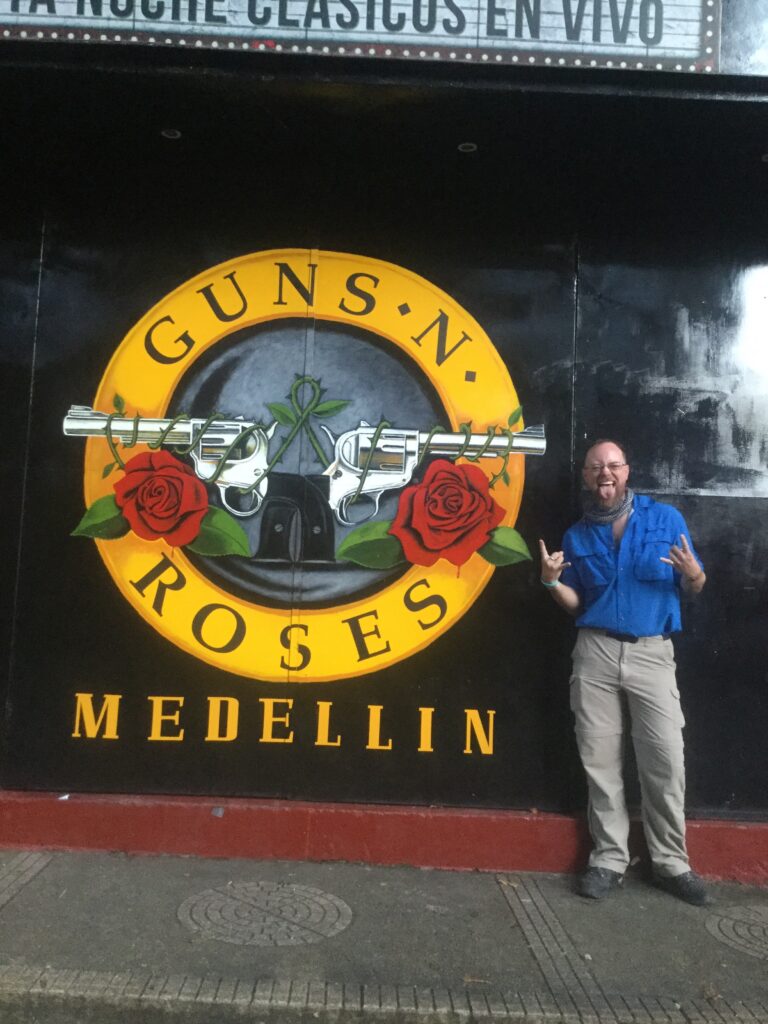
On her hike, Chloe made friends with a gay German guy that invited us to come to watch the sunset from a mountain before his Grindr date. So, I booked the cab on Cabify, another ride-share app. As I watched, the cab kept getting farther and farther away from our location. I tried to cancel it, but the driver did not know how to do it. So, I told him how to do it and he finally did.
Needless to say, the day was a wash. I walked Chloe home, called and talked to A again, and decided to call it a night. I showered, watched some Narcos, and went to bed.

The next day I got up and did a little client work before I got some breakfast up on the roof. I then went down to the metro way early so I could stand in the immense line and pay for a card. I then hopped on the immaculate metro (like Singapore immaculate) and headed to the city center. I got there way early, so I had a little lunch of empanadas, a beer, and a coke. I made sure to use the restaurant’s facilities before my walking tour which was basically just a urinal behind a saloon door. Very strange.
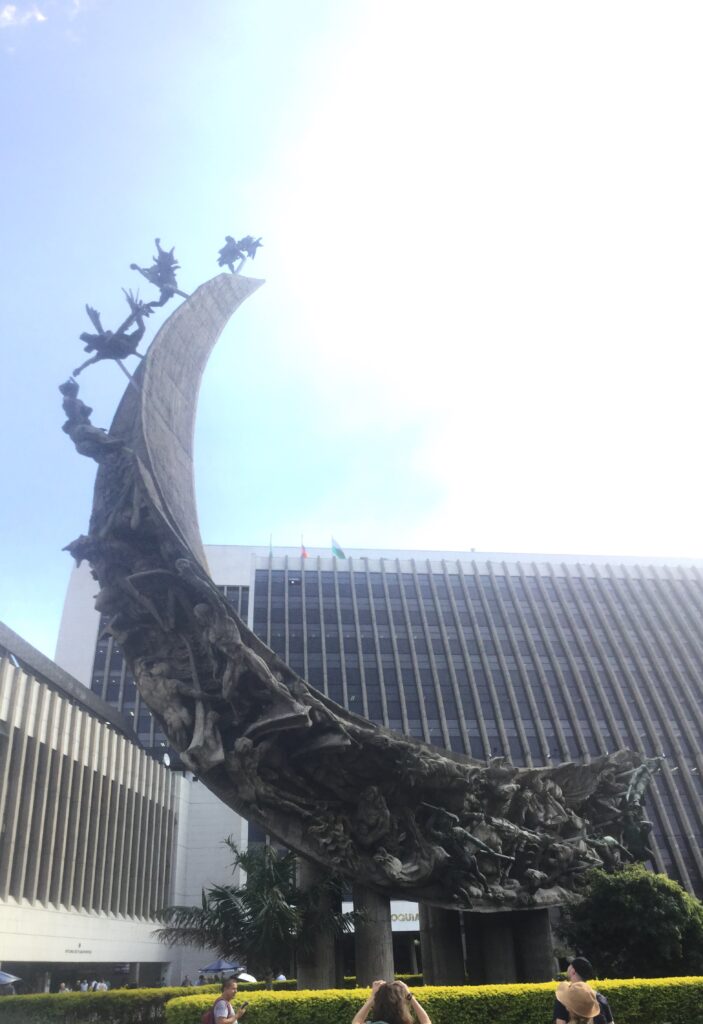
I found the spot where the group would meet and because there were so many of us, we were divided into three groups. I learned so much on this tour. The first is that Medellin is located in the Aborrai Valley and that after the Spanish conquered the area, naming it for a town in Spain, they abruptly left as the natives had no gold. 1616 saw the first settlement here, but unlike other cities founded by Spain, there was no central Plaza de Armas.
Due to the city’s “Eternal Spring” of a temperate climate, many things grew effortlessly here. Coffee brought the railroads and made Medellin grow. However, the law of unintended consequences would make something else grow too.
In the 1950s the government of Colombia wanted to increase its market share of locals using its products. As such, they created tariffs on foreign-made goods. Since they were far superior to the locally made ones, they created a black market of smuggled goods. It was these adroit smugglers that would then invert their routes of taking products into moving a certain product out. And one name rose above all the others: Pablo Emilio Escobar Gaviria.
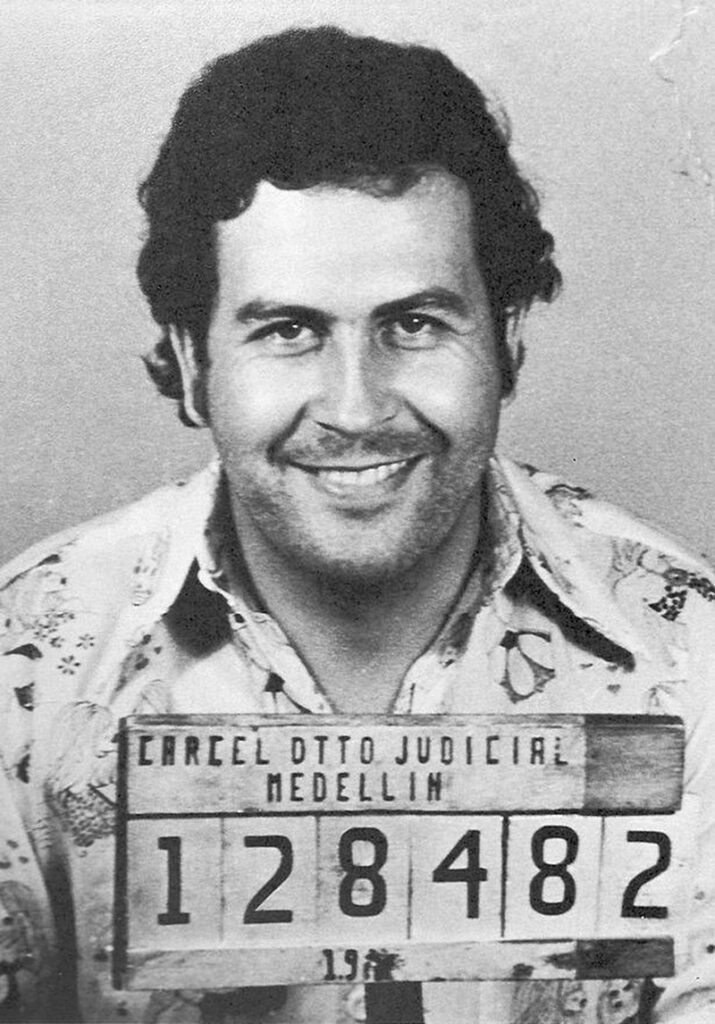
Pablo Emilio Escobar Gavaria was born in Rionegro, Colombia on December 1st 1949. Raised in Medellin during La Violencia, after a brief stint in University, he turned to a life a crime selling fake lottery tickets, grand theft auto, kidnapping and doing the aforementioned smuggling of cigarettes. It was during this time that the sale of cocaine in the United States began to take off. Using the former smuggling routes to get goods in, they began bringing in coca for processing from Peru, Ecuador and Bolivia. Then using those same routes to get them back out and get them to Miami. As the demand for the white powder grew in the US, so did the money, the power, and the violence. The organization officially became the Medellin cartel in 1976 with Escobar at the head, laundering the drug money in various businesses including, on paper, the most successful taxicab company in history. While his plata o plomo (silver or lead) policy of dealing with potential nuisances, he also did a lot of public works projects. He built neighborhoods, feed the impoverished, and was even elected to congress with eyes on becoming president. It is estimated that at the height of his power, he was worth $30 Billion in 1990’s dollars. But, heavy weighed his bloody crown.
Our guide shared that people that were born before his rise to power and during hated him, while those that were born after looked on him as some type of folk hero. It was true, he did a lot of good things with his blood money: he gave a lot to charities, made communities for the poor, and fed them. However, our guide shared a very interesting point how many houses can one build to cancel out a life that one has taken?
The Medellin Cartel rose to prominence in the 70s, providing a lion’s share of the cocaine consumed in the United States. Our guide shared with us the aspects of what makes a cartel. He said it was an organization or group that controlled the collection, processing, distribution, and retail. They also colluded to set prices. This could be applied to any organization from De Beers to OPEC. And retail is where the real money is made. After the drug game moved to Mexico, so did a lot of the violence and Medellin became safer.
Because of Medellin’s cartel, it became the most dangerous city in the world in the 1990s. And I would learn that this was the reason the metro was so clean. The people needed a way to get to the city that was inexpensive. No architects or engineers wanted to come. After years, a brave team finally came and was protected while they worked. The people of Medellin know how special and important it is to have this metro and have treated it accordingly. There is no graffiti, no stickers, and no homeless.
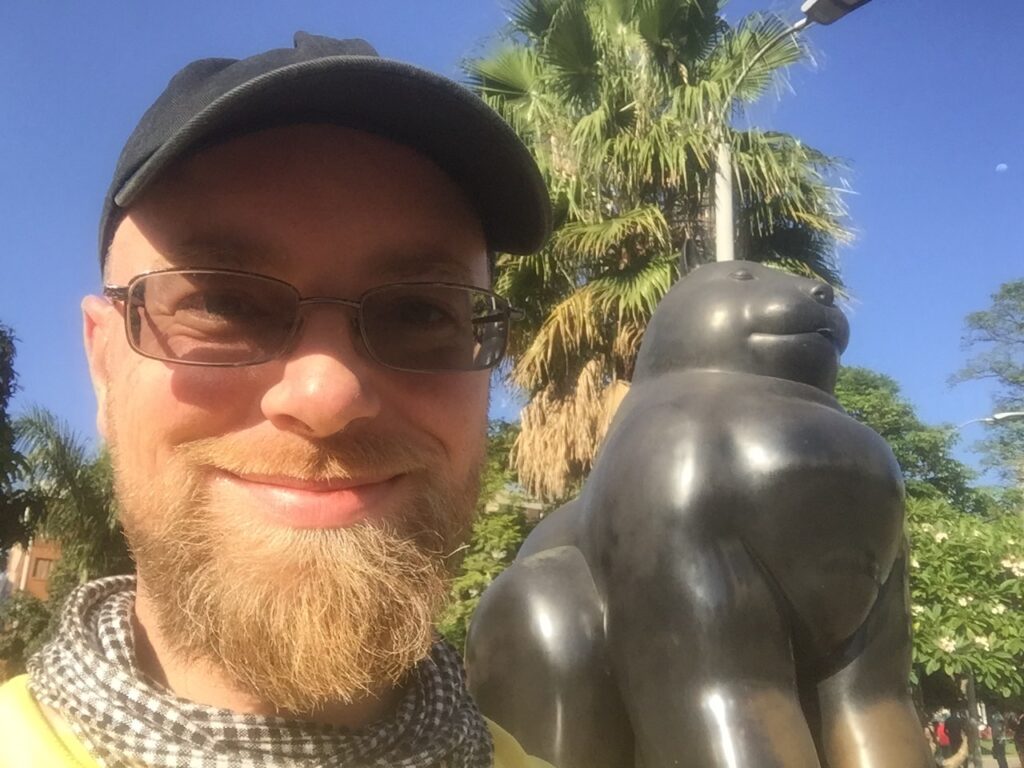
Due to him being a local and already very wealthy, Botero decided to donate a lot of his sculptures to the city of Medellin under one condition. He did not want them in a museum. Instead, he wanted them outside where everyone could see them. He made a string of them down a boulevard, which are also protected.
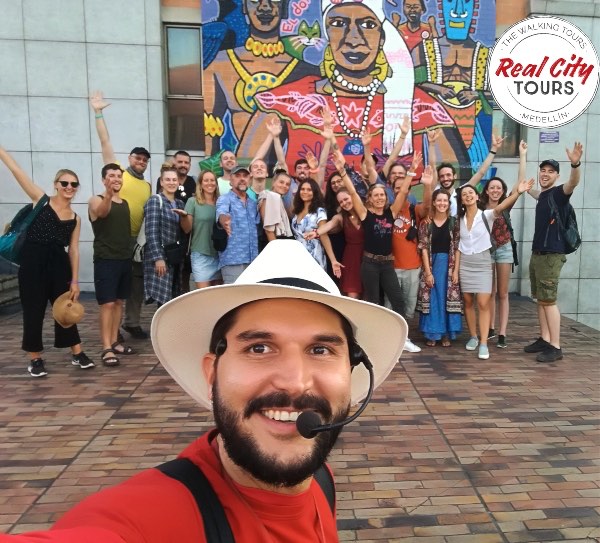
After a group picture, we said our goodbyes and I hopped back on the metro to head home. I began thinking about what the guide said. Being born and bred in Medellin and studying history, he said that it was easier to have collective amnesia regarding the awful times that occurred in the country rife with indiscriminate violence. From mass killings, hits with collateral damage, and bombings, it was easier to put it behind them and just love life and be gracious. It helped me put my observations of Cambodia and Bosnia in perspective.
After I got home, I bought my brother-in-law some Agua Ardiente, the prototypical spirit of Colombia, and got myself a beer. I went to the rooftop and chatted with Ben, an American traveling through Colombia. I then talked with A and asked her permission to become “Facebook official.” I could hear the excitement in her voice when she said yes.
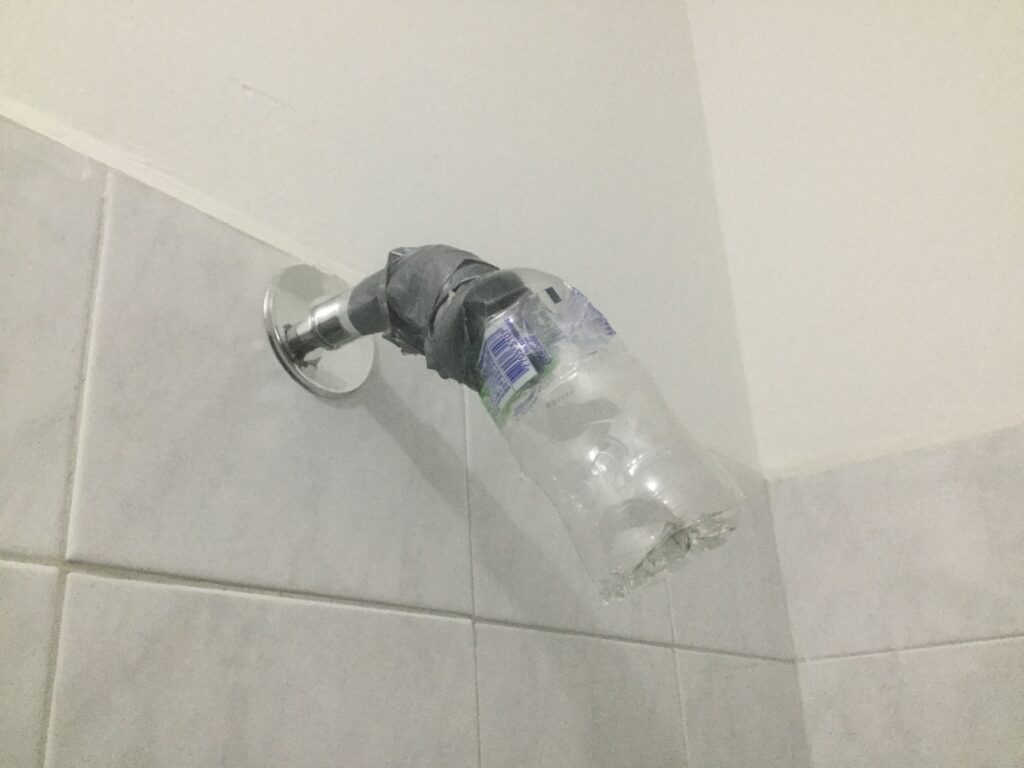
I went back to my room and got a little tired showering from just a flat spigot coming out of the wall. Ingeniously, I took a plastic water bottle after I poked some holes in the bottom over the spigot, taped it there with my duct tape, and turned it on. After a second of pressure building in the bottle, I had several streams of water and successfully jerry-rigged a shower head. Quite proud of myself, I cleaned up, watched a little Narcos, and went to bed.
The next day I woke up ready to do some work, but Chloe contacted me and wanted to meet for coffee. I met her and we had coffee at a lovely shop, but then decided to segway into lunch. Meaning, I got lunch and she got water because she needed to run to the airport.
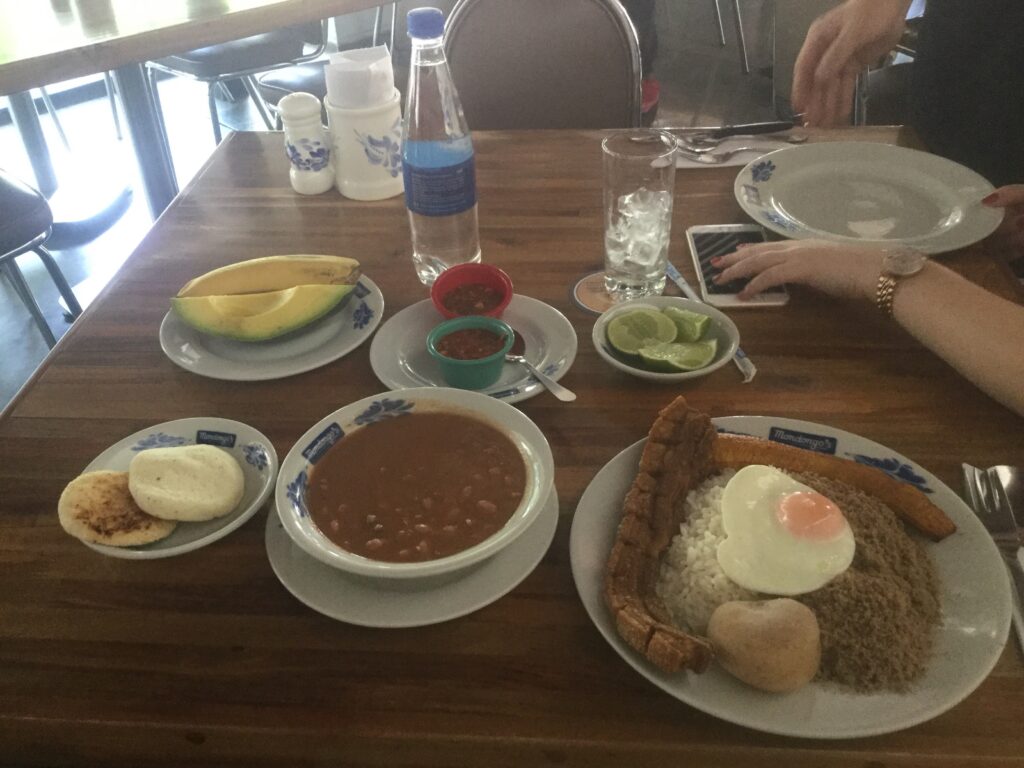
Due to the agricultural culture surrounding Medellin, people worked in the fields a lot, from sun up to sun down. They did not have a lot of time to rest, let alone eat. So, their main meal was called Bandera Paisa, Paisa being a nickname for those from Medellin. Basically, it was a plate stuffed with high-calorie foods that would fuel these workers for the day. It was a lot, so I offered some to Chloe. She gladly took some. She looked at her watch and had to grab her things from her hostel. We hugged and said our goodbyes. She would be going to an ecological preserve deeper in the country and this would be her last piece of civilization for a while.
I headed back to the hostel to do some more client work. I talked to A a little bit and then got ready for another tour. This would take me into the underbelly of the Medellin drug world.
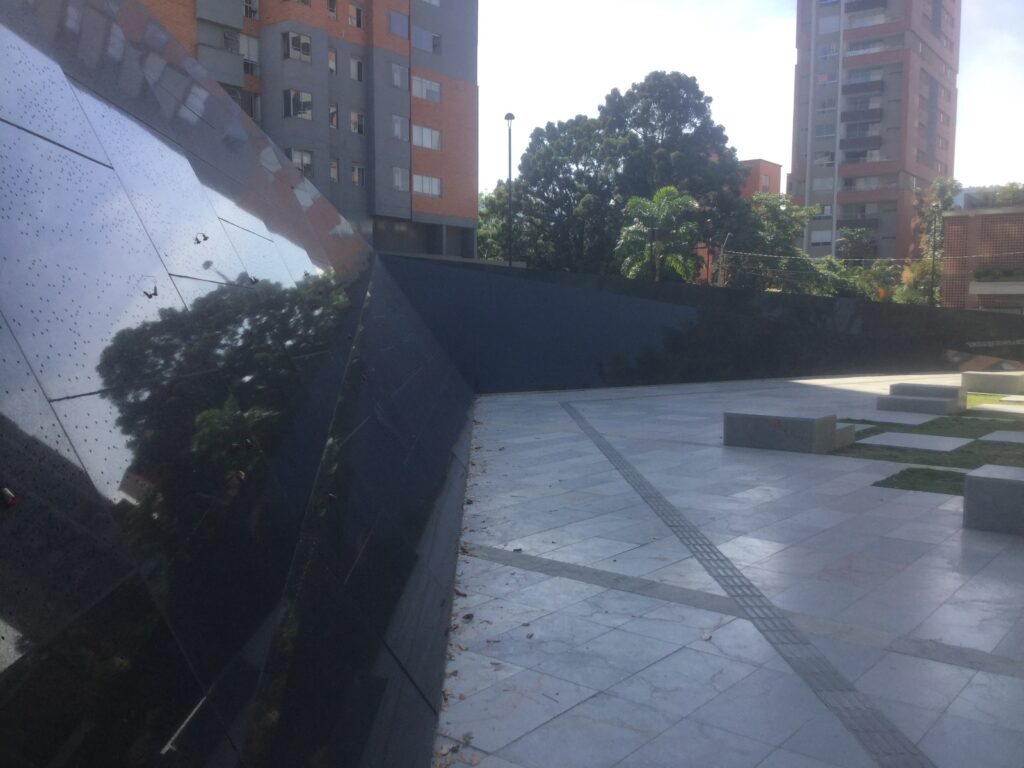
My driver picked me up from the hostel and we headed out into the balmy Colombian afternoon. My first stop was the foundation of the recently imploded Edificio Monaco. This building was Pablo Escobar’s former home. The Cali cartel had hired a Basque separatist from the terrorist group ETA to set up the bomb. It was detonated with Escobar and his family inside. They all survived, but his infant son was injured. Escobar found out where he was and killed him. Although the building survived the first car bombing attack in the history of Colombia, an occurrence that would become too frequent, it was finally demolished the day I arrived in New Zealand, Feb 22, 2019.
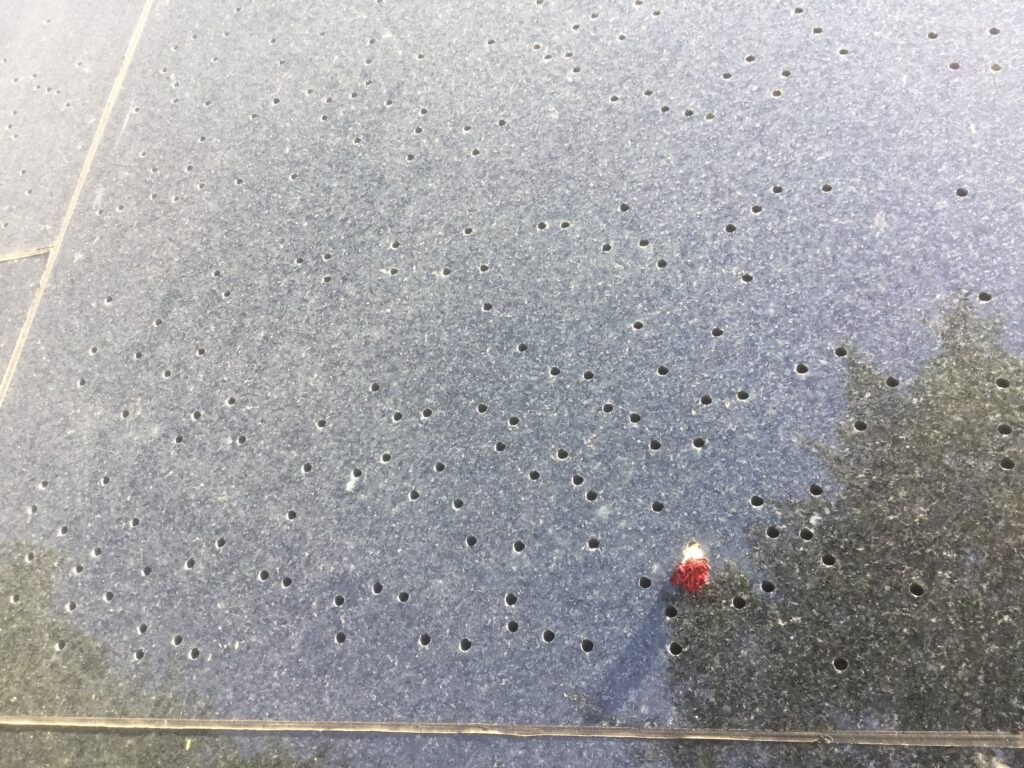
In its stead was a complex of memorials called the Parque Memorial Inflexion, with various plaques commemorating the victims of the drug wars that raged in the country. What stood out to me was that there was a large sculpture perforated by exactly 46,612 pin holes, each representing a life that was taken from 1983-1994. We did not stay here too long.
In the aftermath of the car bombing, it was Escobar’s turn. The Cali Cartel had a string of pharmacies throughout Colombia which became the target of similar attacks from Escobar. In 1989 alone, there were 100 car bombings. It was explained to me that the reason for the violence was to control international distribution with each cartel trying to take a piece of the other.
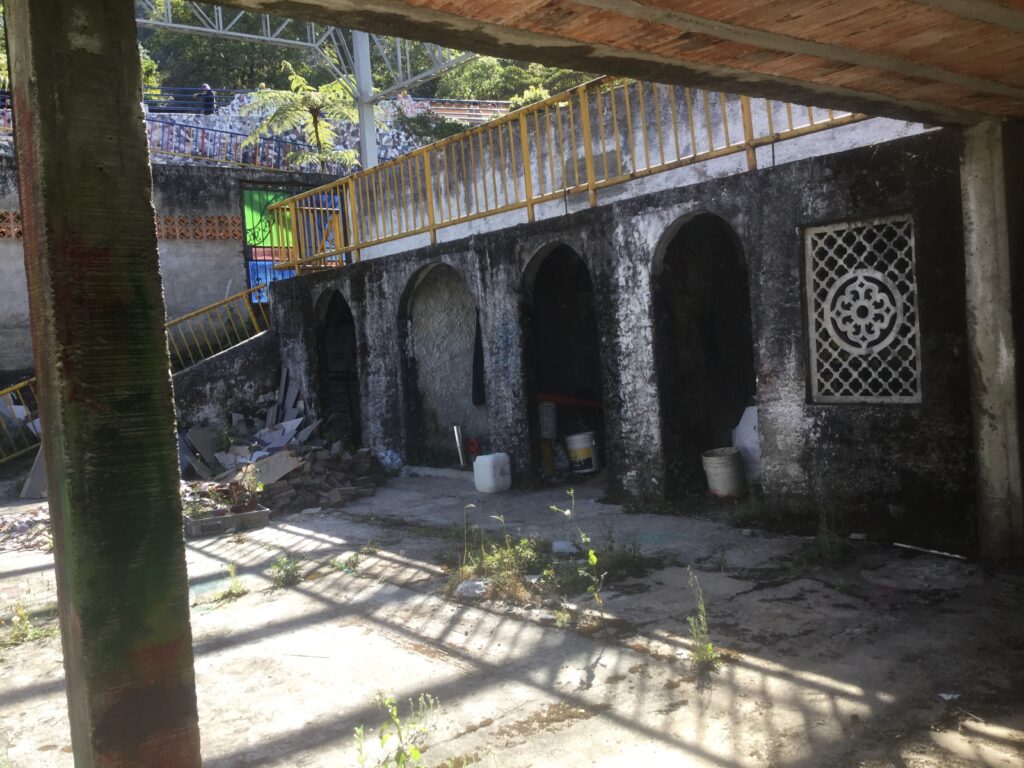
The next stop was the Catedral (Cathedral,) the prison that Pablo Escobar built when the government said that he needed to go to prison. It was located in a beautiful spot high above the city, where Escobar like a hawk in a cage could watch his quarry. He struck a sweetheart deal with the government in that he would stop a lot of the violence if he were allowed to go to his new “home.” They agreed and he moved in. Replete with discos, saunas, and personal chefs, it was not Alcatraz. Because he was still running his cartel, much to the chagrin of the United States government, the Colombians agreed that they would storm the prison and take him to another one where he would have no control. Of course, he got wind of the plan and then fled.
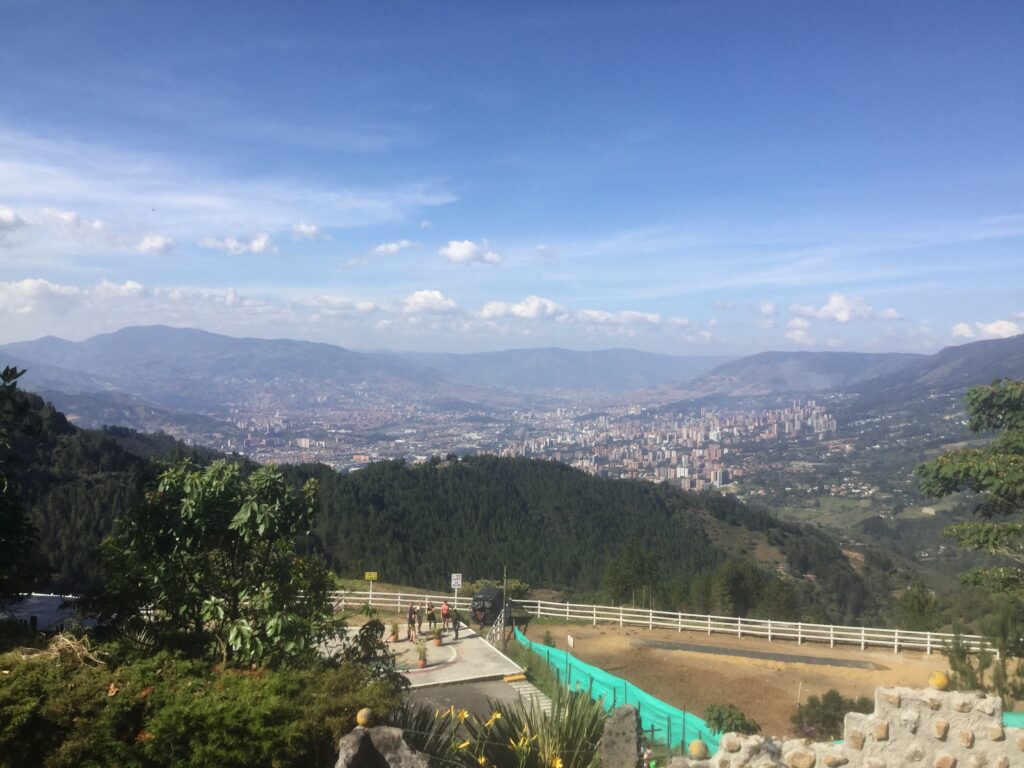
It was here too that PePes (Perseguidos por Pablo Escobar or People Persecuted by Pablo Escobar,) a group of paramilitaries, rival drug traffickers, and others scorned by the drug kingpin joined forces to hunt him. With the Colombian national police, Colombian military, the CIA, DEA, FBI, and United States Special Forces all in the fracas this one man caused, it was just a matter of time before he was caught or executed. It would become the latter.

After the lofty heights of the Catedral, we went to the much more solemn spot of the cemetery where he is buried. Honestly, his gravestone was a lot smaller than I would think that King of Cocaine. However, he got what he wanted, “…a grave in Colombia instead of a cell in the United States.” What was equally as interesting, close by and with far fewer flowers was the grave of La Padrina, Griselda Blanco.
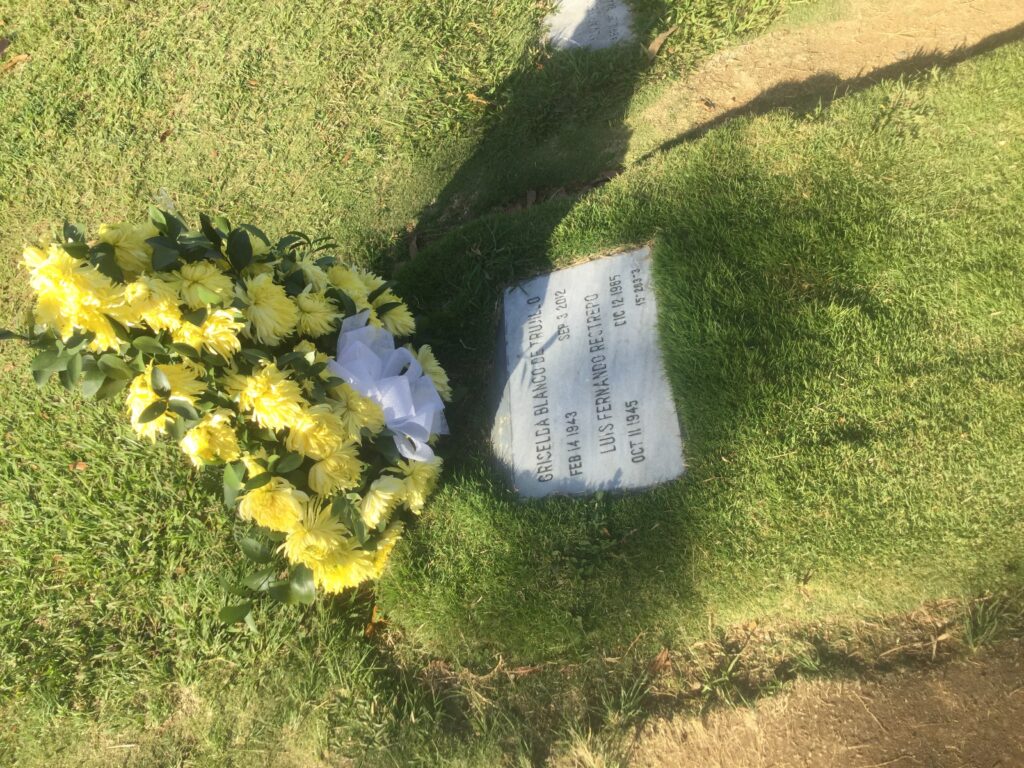
Griselda Blanco was the woman that took Pablo Escobar from being a two-bit smuggler to a man that at the height of his career was making $480 Million a month, according to my guide. Griselda was from Cartegena on the northern coast of Colombia but moved to Medellin with her mother at 3. She started her life of crime at 11, allegedly kidnapping, ransoming, and subsequently killing a child from a rich neighborhood nearby her home. By 13 she was a pickpocket and very deep in the Medellin underworld by the time she was 20. She moved to New York and began importing cocaine in the nascent stages of the drug trade from Medellin until she was arrested and fled back to Colombia. The pull was too strong, and she went back to the US and resettled in Miami.
She became one of Escobar’s main contacts and she was responsible for a lot of the violence that plagued Miami at that time. Fully embracing the life of a criminal, she even had a son named Michael Corleone Blanco. Known also as the Black Widow not just for allegedly killing a husband or two (or three,) when rivals tried to muscle in on her territory, she got the blessing of the dons back home to bring sicarios (hitmen) in to kill not only the rivals, but their families, children, and even pets. It surmised that she was responsible for the infamous Dadeland Mall Massacre in 1979 where an exchange of bullets in broad daylight ended the lives of two people injuring a few others; just another battle in the Cocaine Cowboy Wars of Miami. She was eventually caught and served over a decade in prison before being deported back to Medellin. She was shot to death on September 3, 2012 as she was buying meat from a butcher shop.
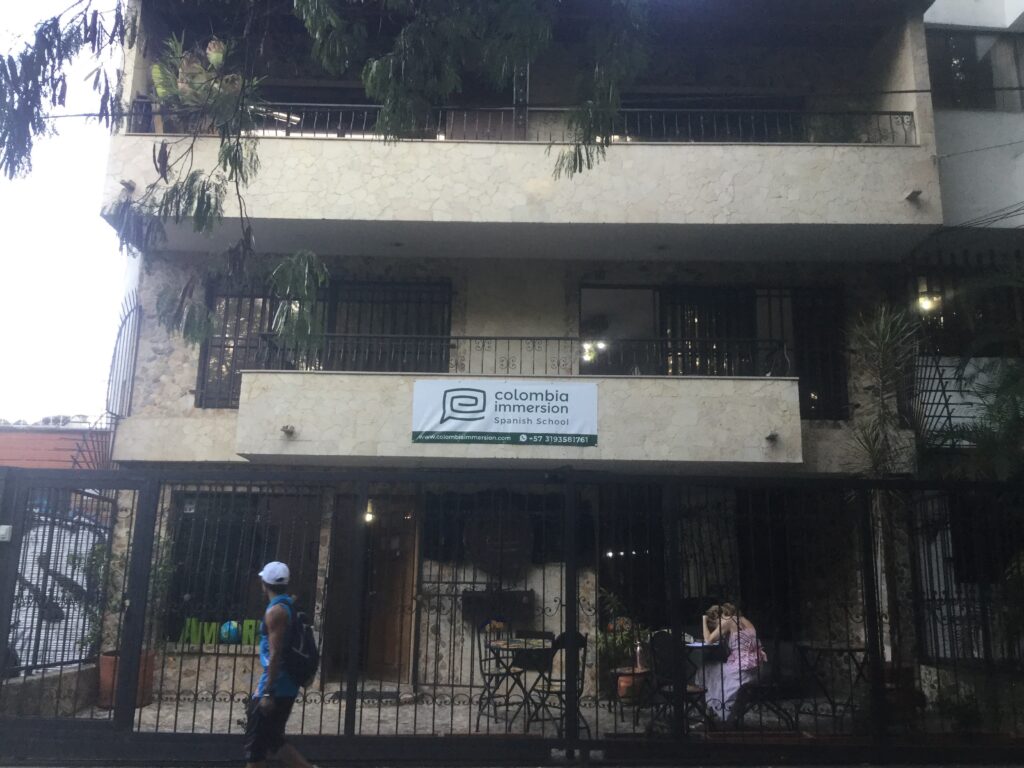
The next location I was taken was to the place where Escobar was in hiding and was then subsequently shot. He had been hiding in the quaint Los Olivos neighborhood for 16 months since he had fled from La Catedral. A specialized national police force called the Search Bloc was on the hunt. He was eventually done in, maybe on purpose, by making a call to his son Juan Pablo that was cut short. The Search Bloc found him, quite possibly with the aid of the CIA and their ability to listen in on calls. They moved on the apartment that was over a daycare center and gave chase, forcing Escobar to jump on a neighboring roof. It was here where on December 2, 1993 a day after his 44th birthday, he was shot in the leg, the torso, and with a fatal shot in the ear.
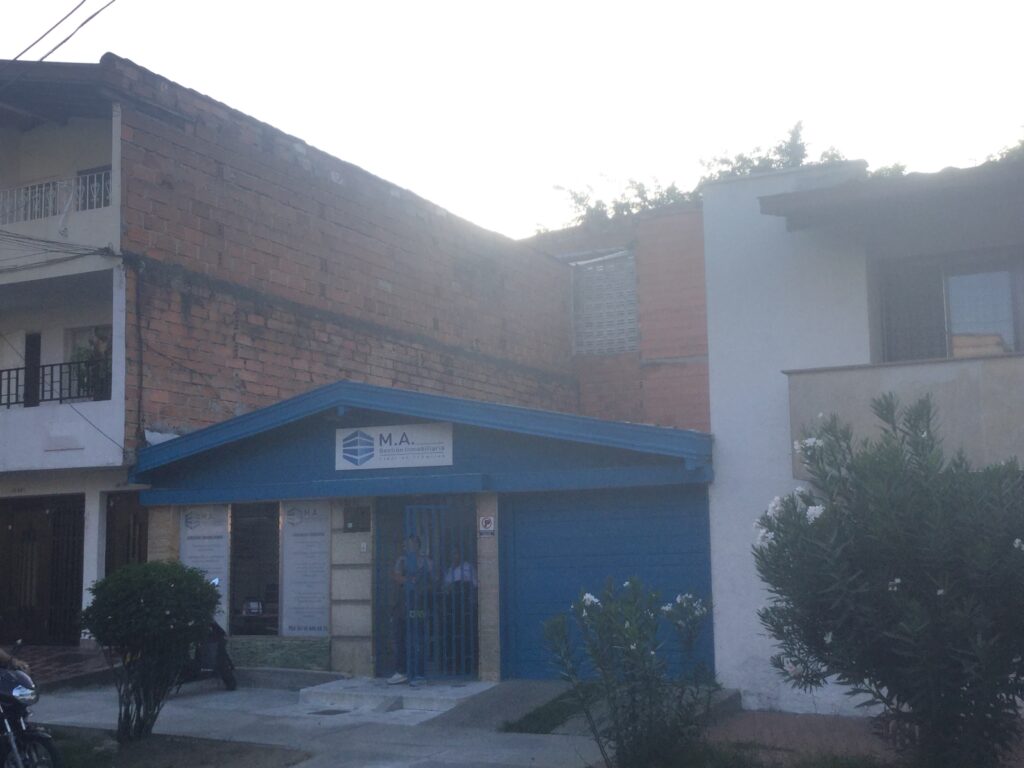
As we drove away from the site where he died, I learned that Escobar’s son had shunned the notoriety his surname no doubt would have garnered. Sebastian Marroquin changed his name from Juan Pablo Escobar after he fled Colombia for Argentina. He had since become a motivational speaker.
On the way home, I asked my driver how was Medellin these days. He said it still had its problems but was a lot better than it was. There were still drug dealers and cartels, but nothing like before. He told me that currently, they were selling flavored cocaine like vanilla and coconut as well as something called Tutsi, cocaine mixed with ketamine and ecstasy. He then suggested that if I was not busy, I check out a club called Lutron which was a former Escobar mansion. He slyly mentioned that it had since been turned into a high-class brothel that serviced some of the premier soccer players of the country. I laughed and joked I would visit for educational purposes. He laughed too.
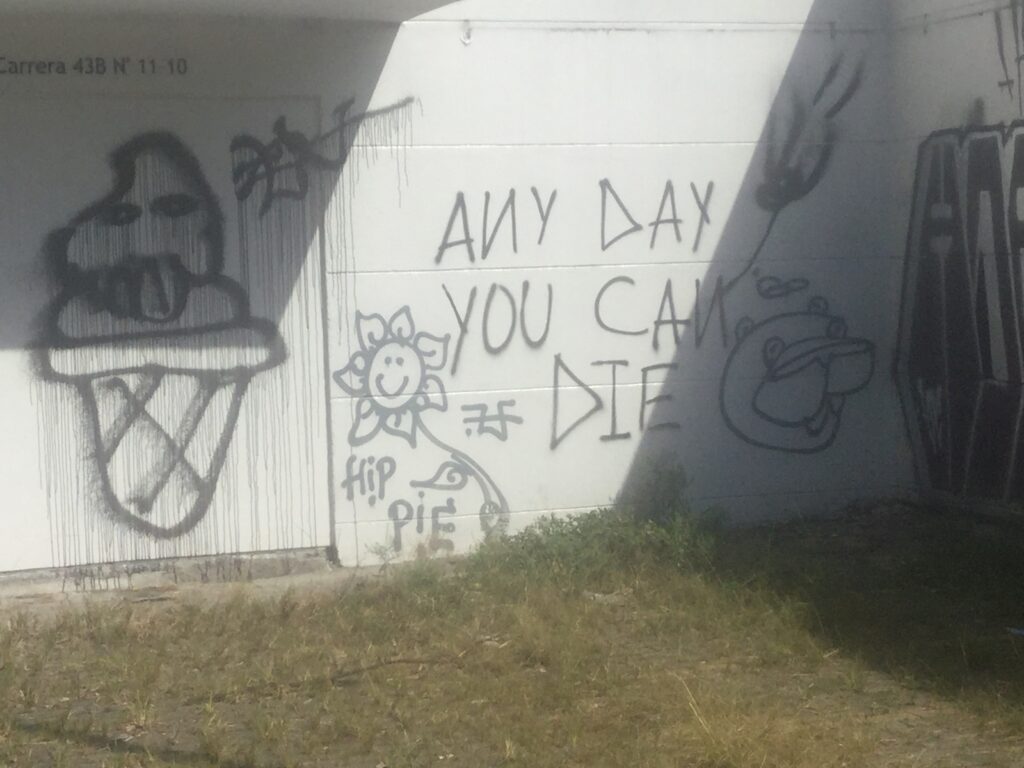
On a more serious note, as we passed Comuna 13, one of the more historically violent neighborhoods of the city that had since rebranded itself with copious amounts of street art, my driver said something interesting. Much like had been explained in my walking tour, the Colombians were out of the international drug game. In their place were, according to the coca farmers, people that sounded like they were from telenovelas. The Mexican cartels had infiltrated Colombia.
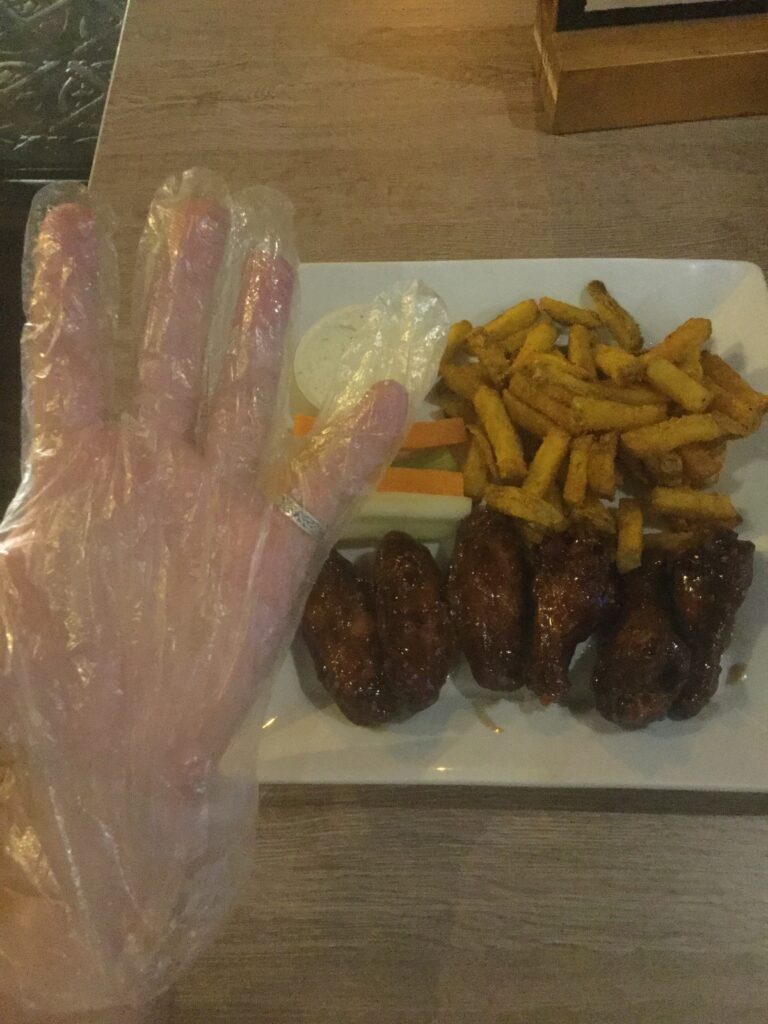
I was then taken back to the hostel. After thanking my driver, I headed up and checked in with A and told her about my day. I then went back to Hooters to get some wings for dinner then called it a night.
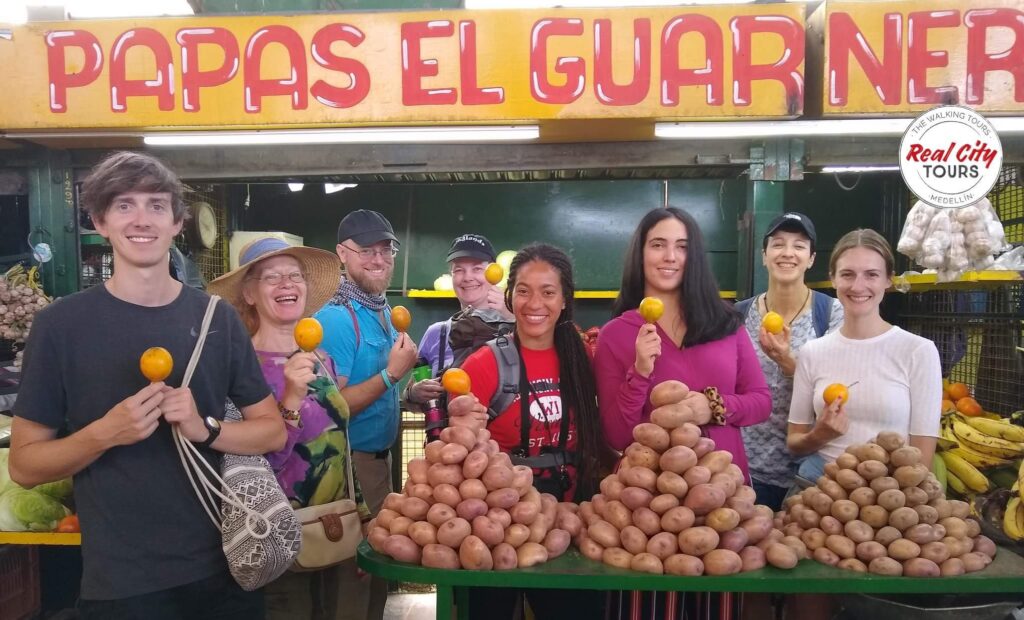
The next day I woke up, had breakfast, then headed back downtown to do something a little more lighthearted, a tropical fruit tasting. Honestly, people can snort as much cocaine as they want, my drug is fresh, delicious, exotic fruit. Luckily, I learned a lot with A back in Peru, so there were not too many new things. I still had a great time and made some new friends.
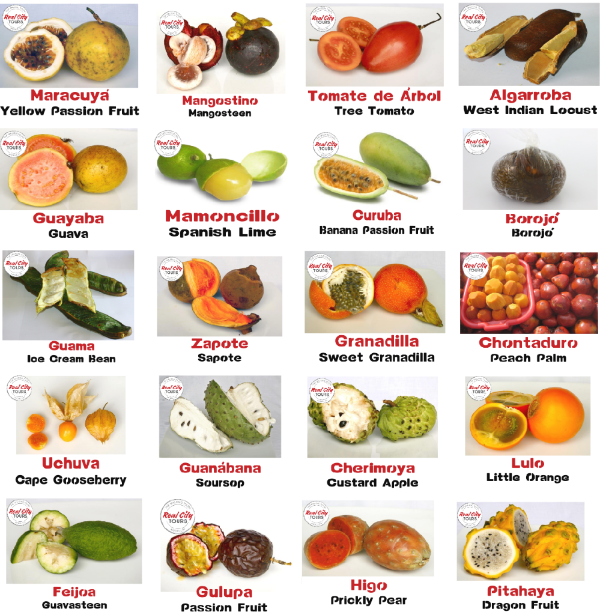
I headed back to the hostel and dropped off my stuff before going back out to mail some postcards. As I wanted to go to see one of Escobar’s houses that they turned into a museum, the one Chloe and I missed. Unfortunately, it was closed. So I took a DiDi to the Casa de la Memoria, a more official museum of the carnage of the Narco years.

Now, I understand that it is a difficult subject with many, many sad stories. However, I found the museum a bit underwhelming. They tried making it too interpretive, like roulette wheels deciding if people lived or died. But whatever helps.
I headed back to the hostel, but was hungry. I decided to go grab a burger from the place across the street again. I went back, showered, then went to bed. Panama in the morning.
